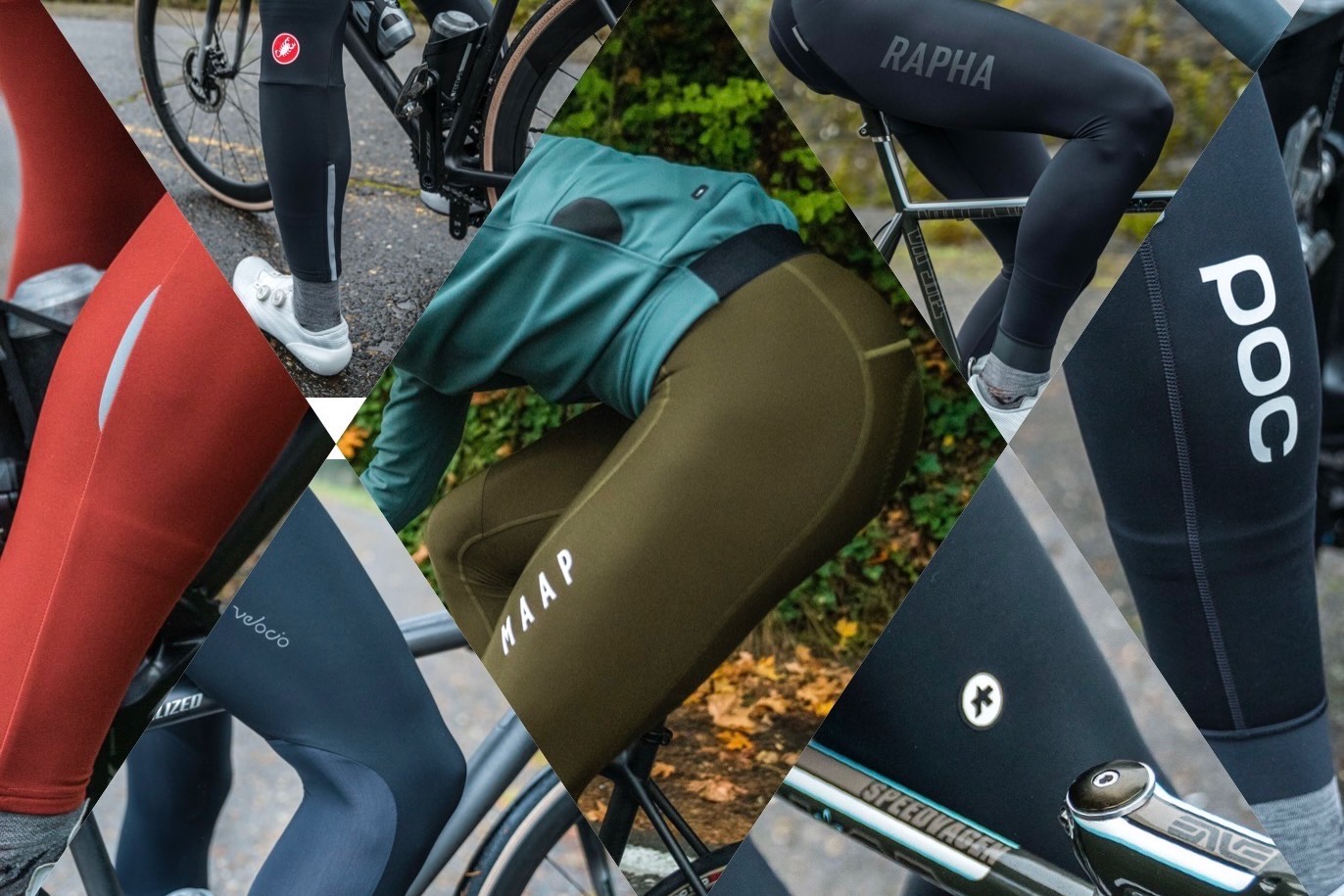
As the seasons change, a quality pair of cycling bib tights can help you keep riding through the cooler months. Depending on where you live, riding in fall, winter, and spring requires protecting your legs, glutes, and midsection from the elements and cooler temperatures to maintain comfort and enhance your enjoyment on the bike.
Traditionally, winter tights were simple garments, worn over a favorite pair of cycling shorts. Most used a thin, fleecy fabric that didn’t protect well against moisture or wind. Today, with the help of advanced fabrics, construction techniques, and built-in pads, modern bib tights manage the temperature and movement of the lower body in a way that makes shoulder season and winter riding predictable and more pleasant.
To find the perfect pair of bib tights, it’s important to think about the specific conditions you will face, so you don’t end up with too much, or too little protection. The very best tights are versatile, and create a sensation of wearing flexible armor that can adapt to any riding position, any intensity level, and any weather condition without missing a beat. Of course, there are loads of options on the market to suit varying needs, temperature ranges, weather conditions, and budgets, so finding the right model for you can be a challenge.
To help, we tested 15 of the best cycling bib tights on the market side by side. You’ll find our top picks listed below, followed by the best of the rest which are also great options worthy of consideration. You can refer to our comparison chart to see the specs of the models we tested at a glance. Our buying advice provides information that may be helpful when making a purchase decision, and we’ve got answers to common questions in our FAQ section.
The Best Cycling Bib Tights of 2023
- Best Overall Cycling Bib Tights: MAAP Team Evo Thermal Bib Tight
- Best Budget Cycling Bib Tights: Gorewear C3 Thermo Bib Tights+
- Most Versatile Cycling Bib Tights: Velocio LUXE Bib Tight
- Best Cycling Bib Tights for High-Intensity Riding: Rapha Pro Team Lightweight Tights With Pad
- Best Cycling Bib Tights for Severe Cold: Castelli Polare 3 Bibtight
- Best Cargo Bib Tights: Ornot Thermal Cargo Bib Tight
- Best Cycling Bib Tights For Weather Protection: Castelli Free Aero RC Bibtight
MAAP Team Evo Thermal Bib Tight
Specs
- MSRP $355
- Weight 271g (size M)
- Claimed Temperature Range 40° to 63° F, 5° to 17° C
- Pad 3D Thermo Molded multi-density chamois – Oeko-Tex certified
- Materials 85% Polyamide, 15% Elastane – bluesign-approved
- Available Sizes XS, S, M, L, XL, XXL
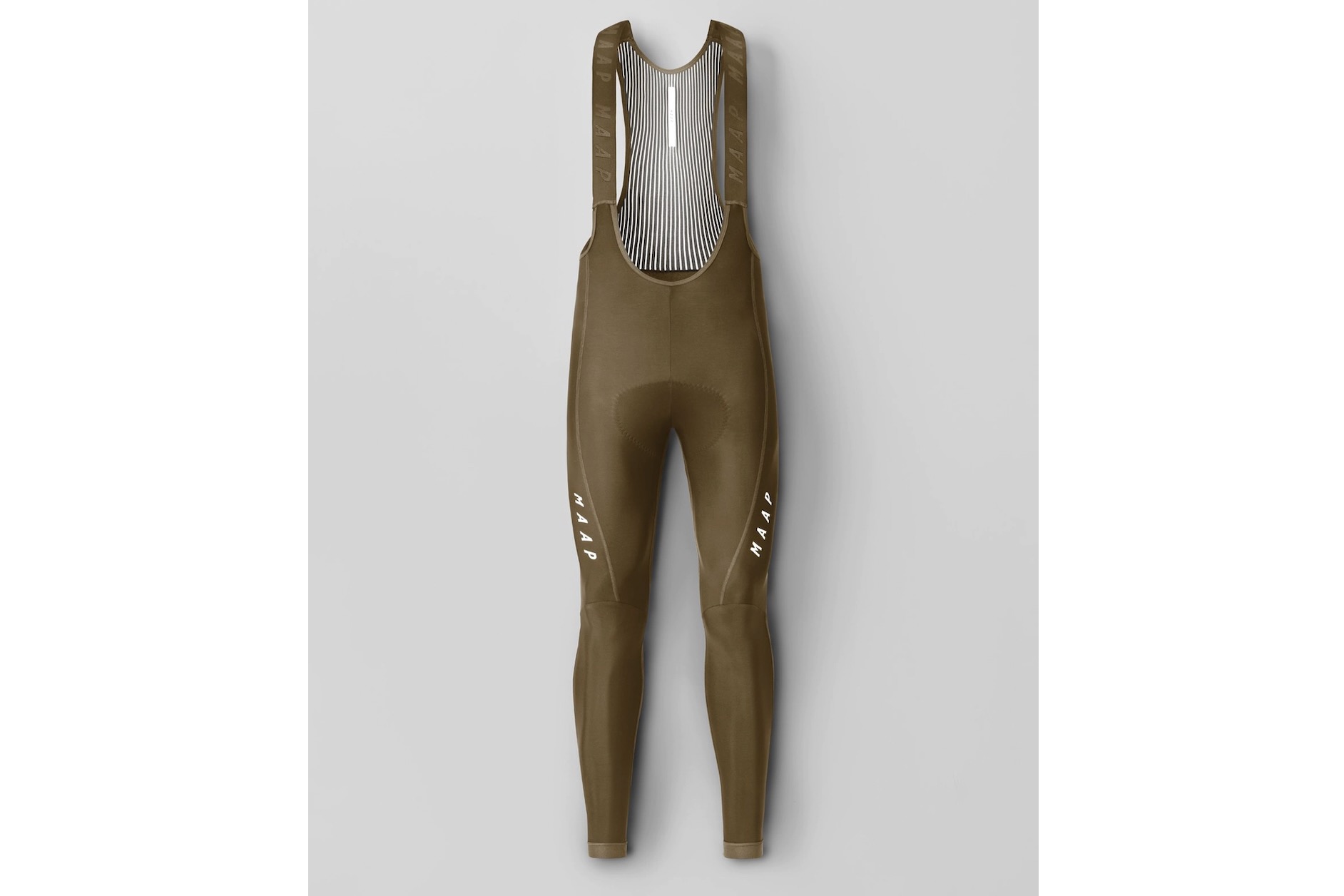
Pros
- Supreme Comfort
- Good looks
- Multiple color options
- Functional in a wider temperature range than the "thermal" name suggests
Cons
- Eye-watering price tag
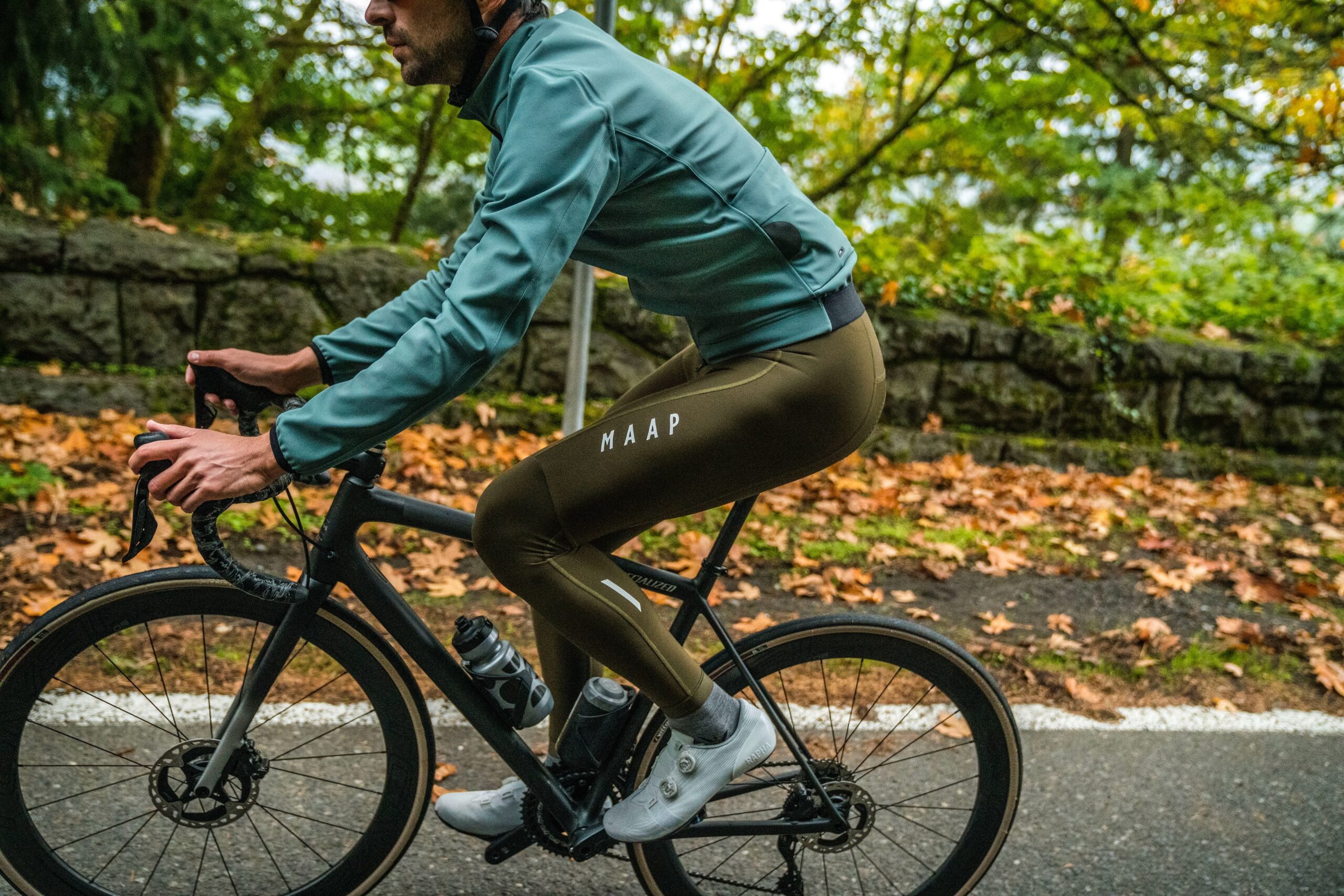
Gorewear C3 Thermo Bib Tights+
Specs
- MSRP $130
- Weight 281g (size M)
- Claimed Temperature Range not specified
- Pad Active Comfort Men's Seatpad
- Materials 85% Polyamide, 15% Elastane
- Available Sizes XS, S, M, L, XL, XXL
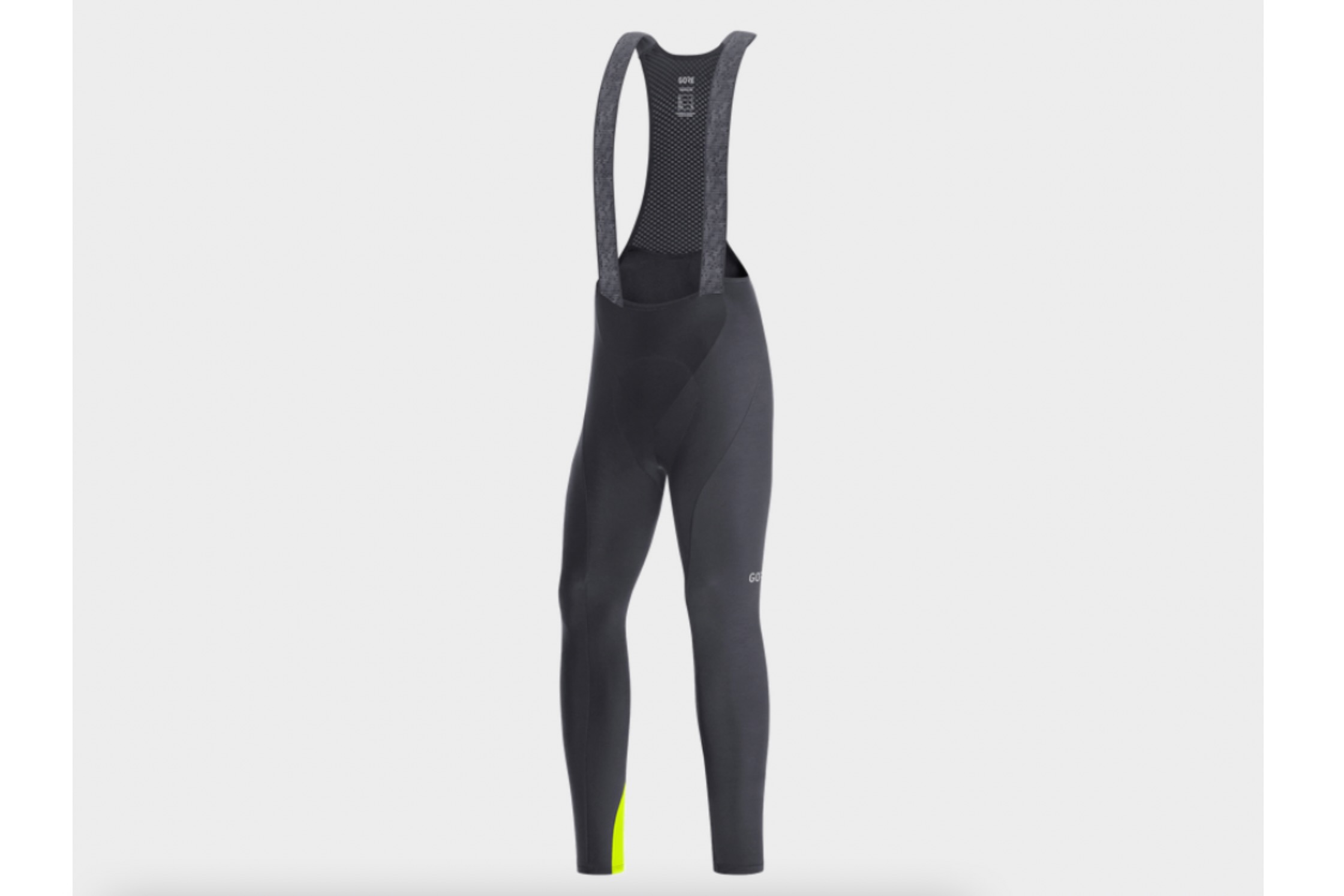
Pros
- Minimal seams
- Comfortable straps
- Wind and water-resistant in vulnerable areas
- Reasonable price
Cons
- None
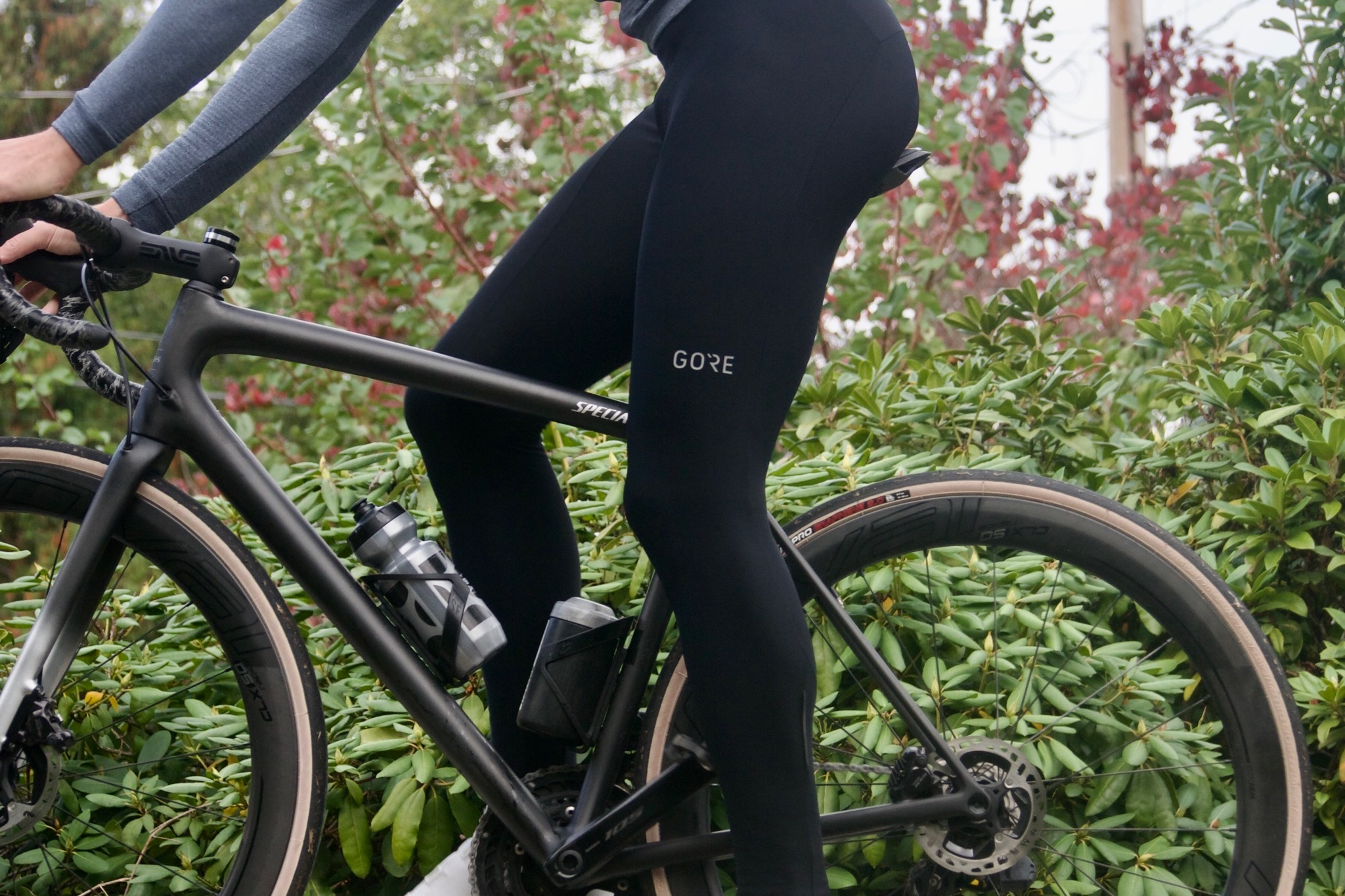
Velocio Luxe Bib Tight
Specs
- MSRP $299
- Weight 230g (size M)
- Claimed Temperature Range not specified
- Pad Signature Chamois developed w/ Cytech
- Materials 62% Polyamide, 38% Elastane
- Available Sizes XS, S, M, L, XL, XXL, XXXL, XXXXL
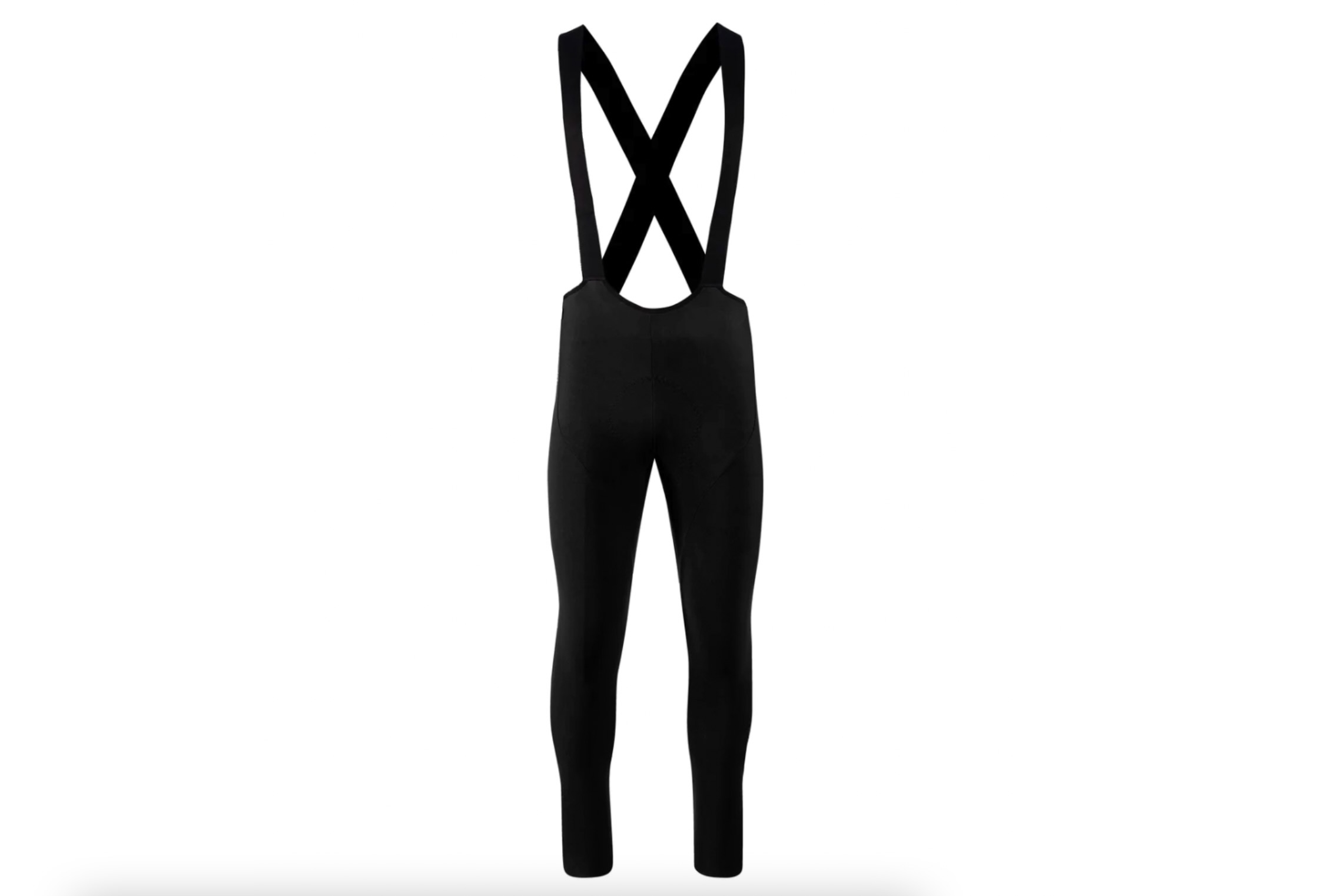
Pros
- Incredible all-around comfort
- Impeccable Fit
- Perfect pad
Cons
- Expensive
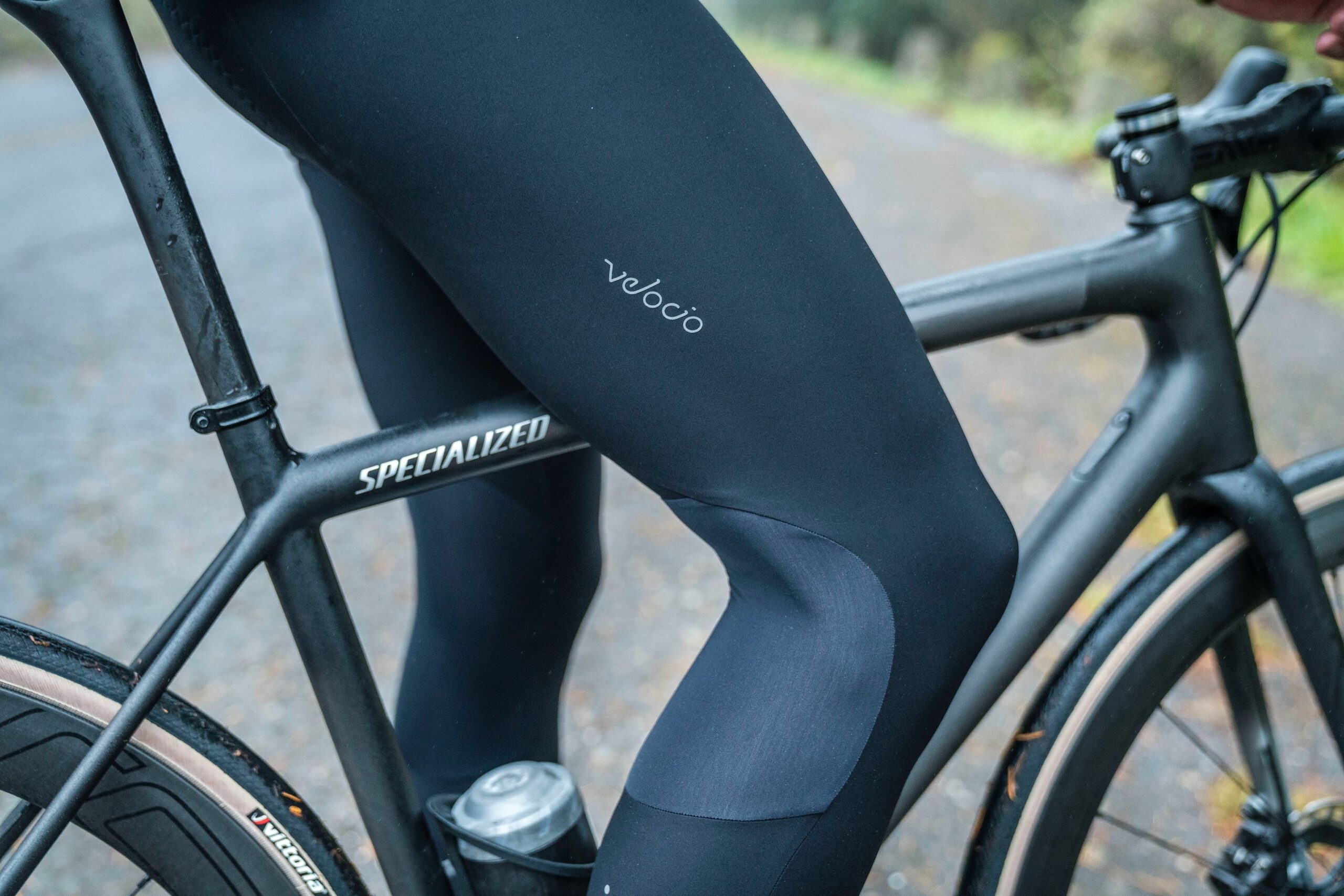
Rapha Pro Team Lightweight Tights With Pad
Specs
- MSRP $250
- Weight 220g (size M)
- Claimed Temperature Range 43° to 64° F, 6° to 18° C
- Pad Rapha Pro Team Training
- Materials 78% Lightweight Recycled Nylon, 22% Recycled Elastane
- Available Sizes XS, S, M, L, XL, XXL

Pros
- Light
- Stretchy
- Nice pad
- Excellent fit
Cons
- Expensive
- Minimal visibility
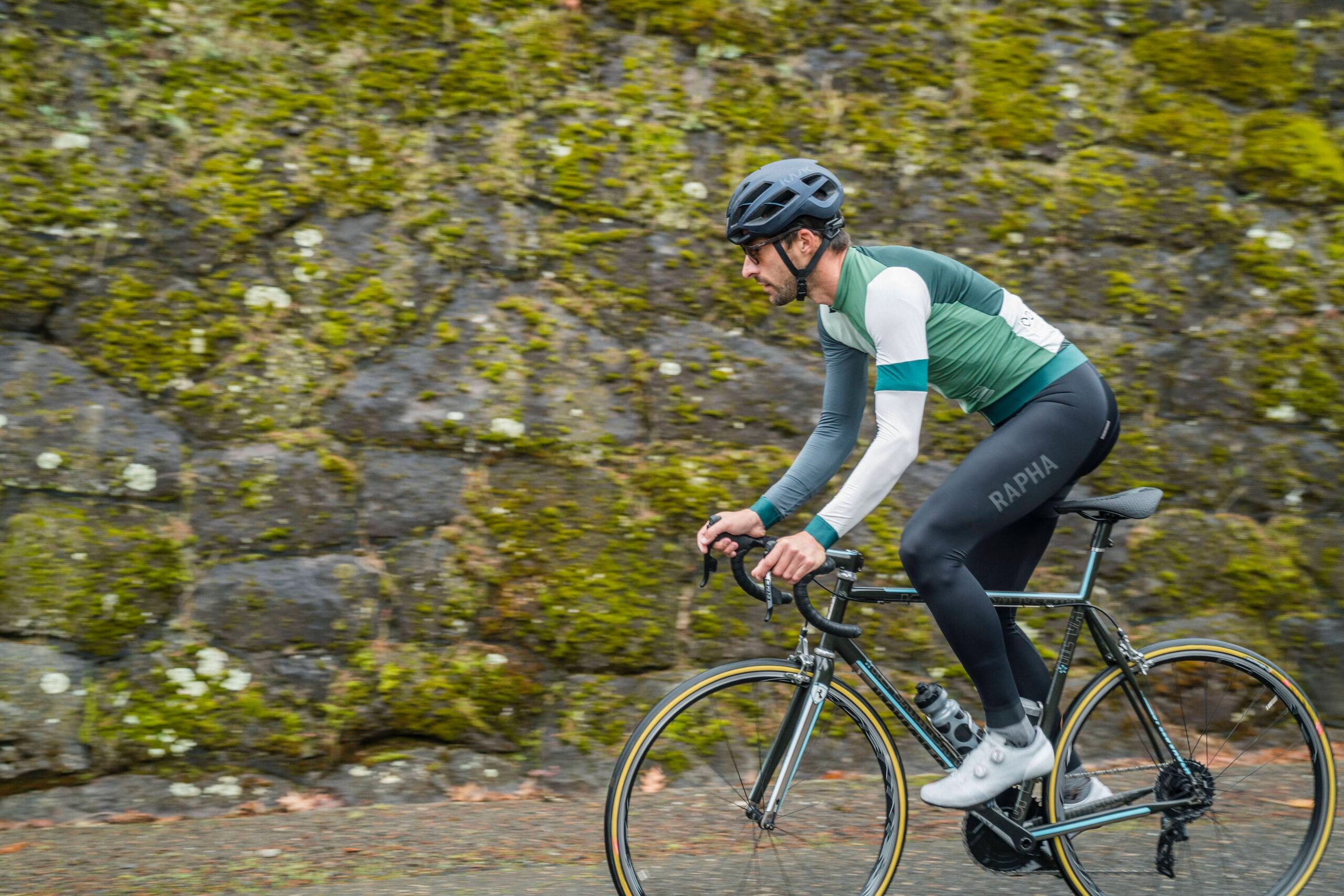
Castelli Polare 3 Bibtight
Specs
- MSRP $210
- Weight 333g (size M)
- Claimed Temperature Range 23° to 41° F, -5° to 5° C
- Pad Castelli Kiss Air 2
- Materials Gore-Tex Infinium, Polyamide, Elastane
- Available Sizes XS, S, M, L, XL, XXL, XXXL

Pros
- Impenetrable warmth
- Great for riding in harsh conditions
- Reflective details
Cons
- Heavy
- Can feel clammy at times
Ornot Thermal Cargo Bib Tight
Specs
- MSRP $208
- Weight 300g (size M)
- Claimed Temperature Range 38° to 60° F, 3° to 15° C
- Pad Oeko-Tex certified endurance pad made with recycled fibers
- Materials Bluesign-approved 83% Recycled Polyamide, 17% Recycled Elastane
- Available Sizes XS, S, M, L, XL, XXL
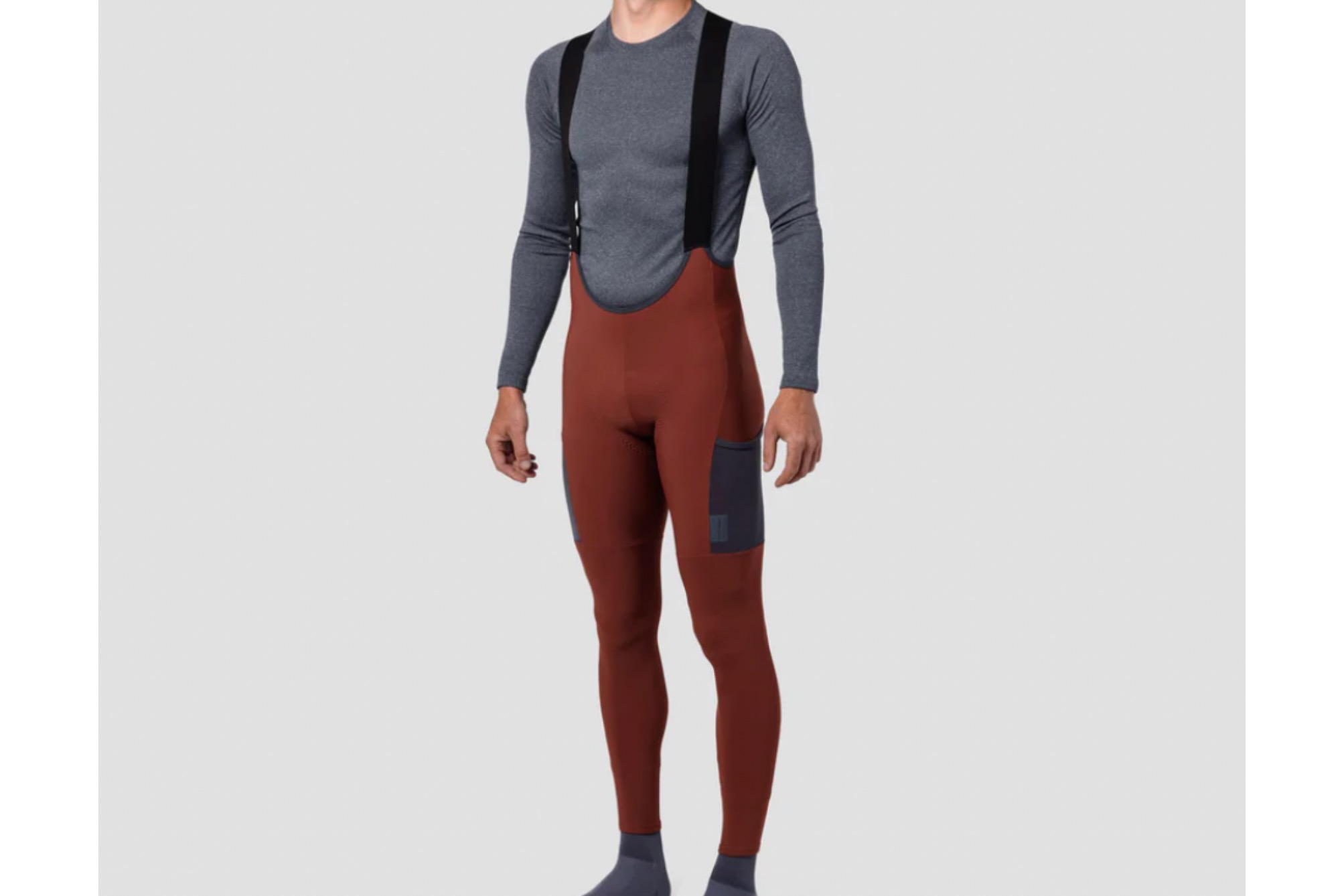
Pros
- Four useful pockets
- Slightly less compressive fit
- Environmentally and socially responsible production
Cons
- None
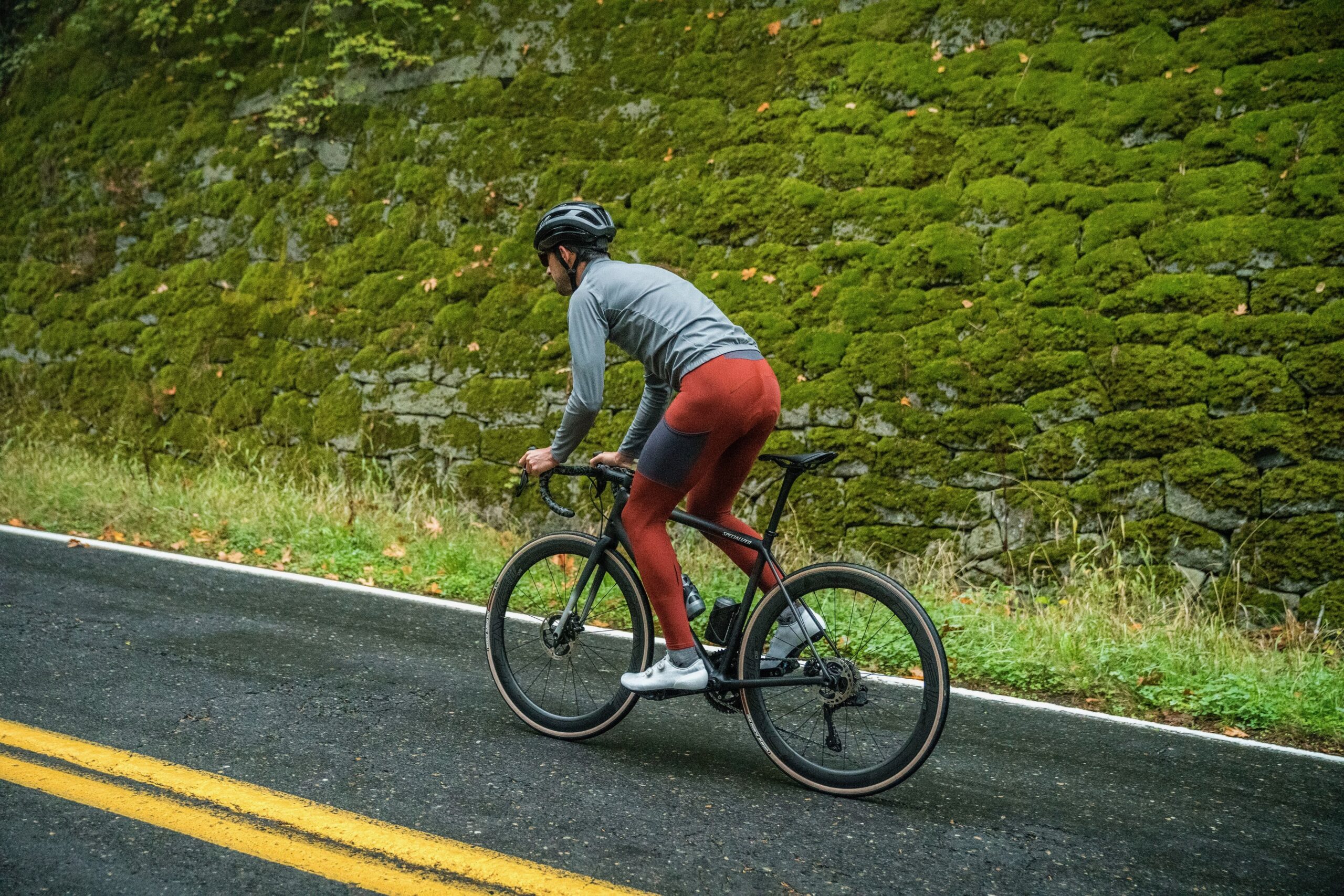
Castelli Free Aero RC Bibtight
Specs
- MSRP $230
- Weight 356g (Size M)
- Claimed Temperature Range 36° to 54° F, 2° to 12° C
- Pad Castelli Progetto X2 Air Seamless
- Materials 53% Polyamide, 47% Elastane
- Available Sizes XS, S, M, L, XL, XXL, XXXL

Pros
- Excellent breathability
- Top-shelf pad insert
Cons
- Straps are a bit fiddly
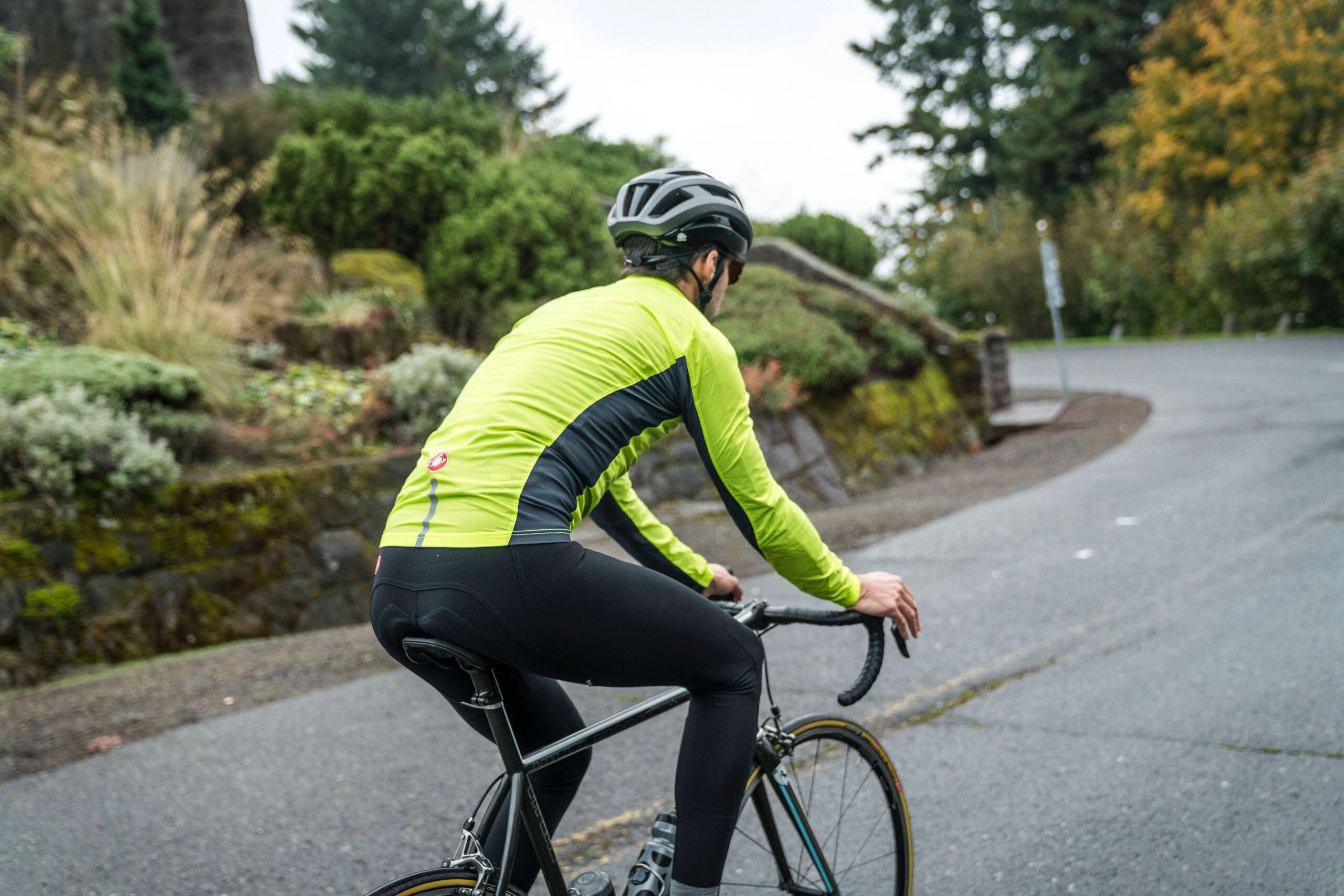
Best of the Rest
Endura FS260-Pro Thermo Bibtights II
Specs
- MSRP $180
- Weight 329g (size M)
- Claimed Temperature Range not specified
- Pad Elastic Interface Men’s Performance Space
- Materials Thermoroubaix® (45% Nylon, 42% Polyester, 13% Elastane)
- Available Sizes XS, S, M, L, XL, XXL
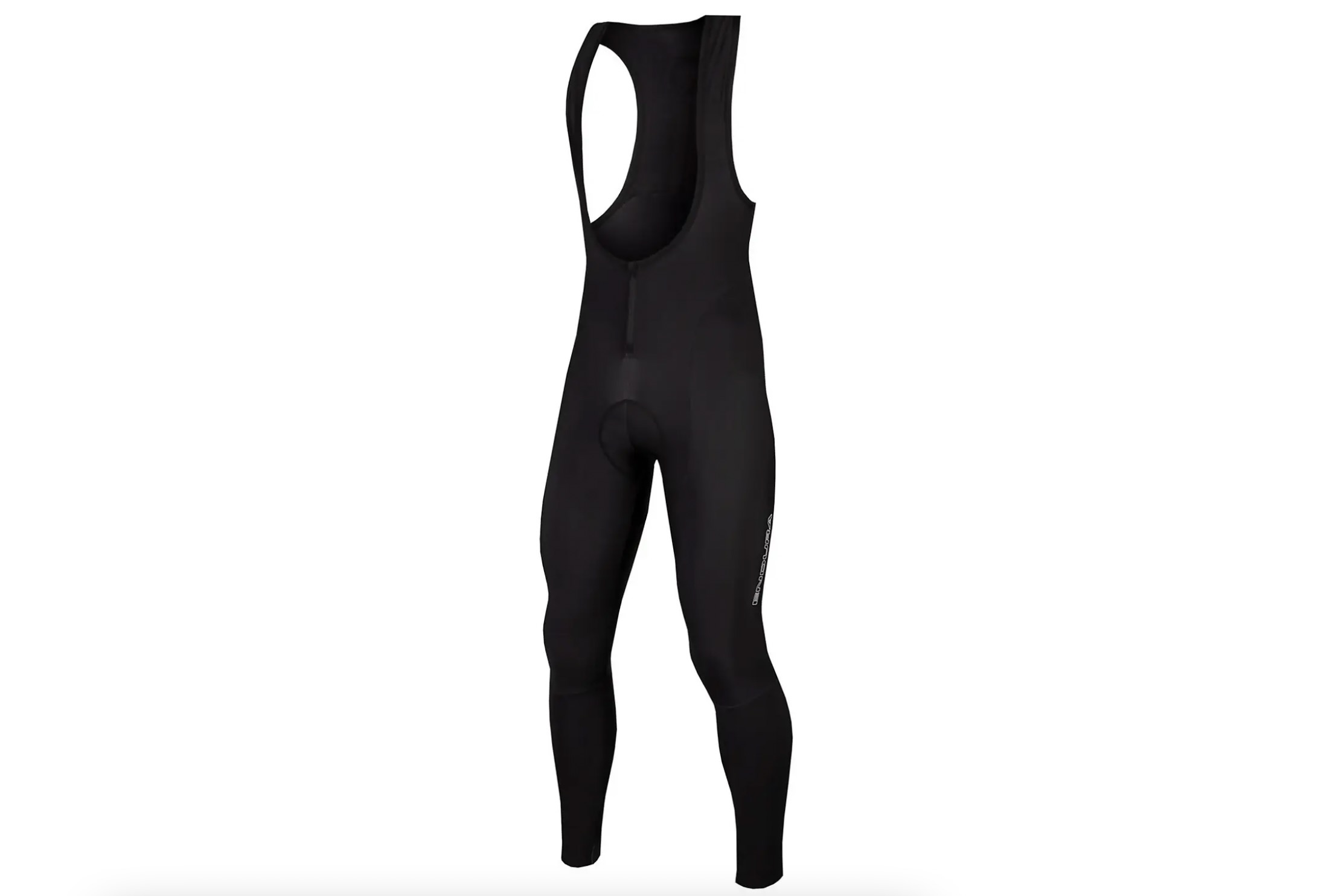
Pros
- Excellent overall value
- Easily repels road spray and drizzle
Cons
- Fit is a bit loose near the ankle
POC Thermal VPDS Bib Tights
Specs
- MSRP $200
- Weight 290g (size M)
- Claimed Temperature Range 41° to 59° F, 5° to 15° C
- Pad VPDS (visco-elastic polymer dough)
- Materials "Windproof and water-resistant material"
- Available Sizes XS, S, M, L, XL, XXL
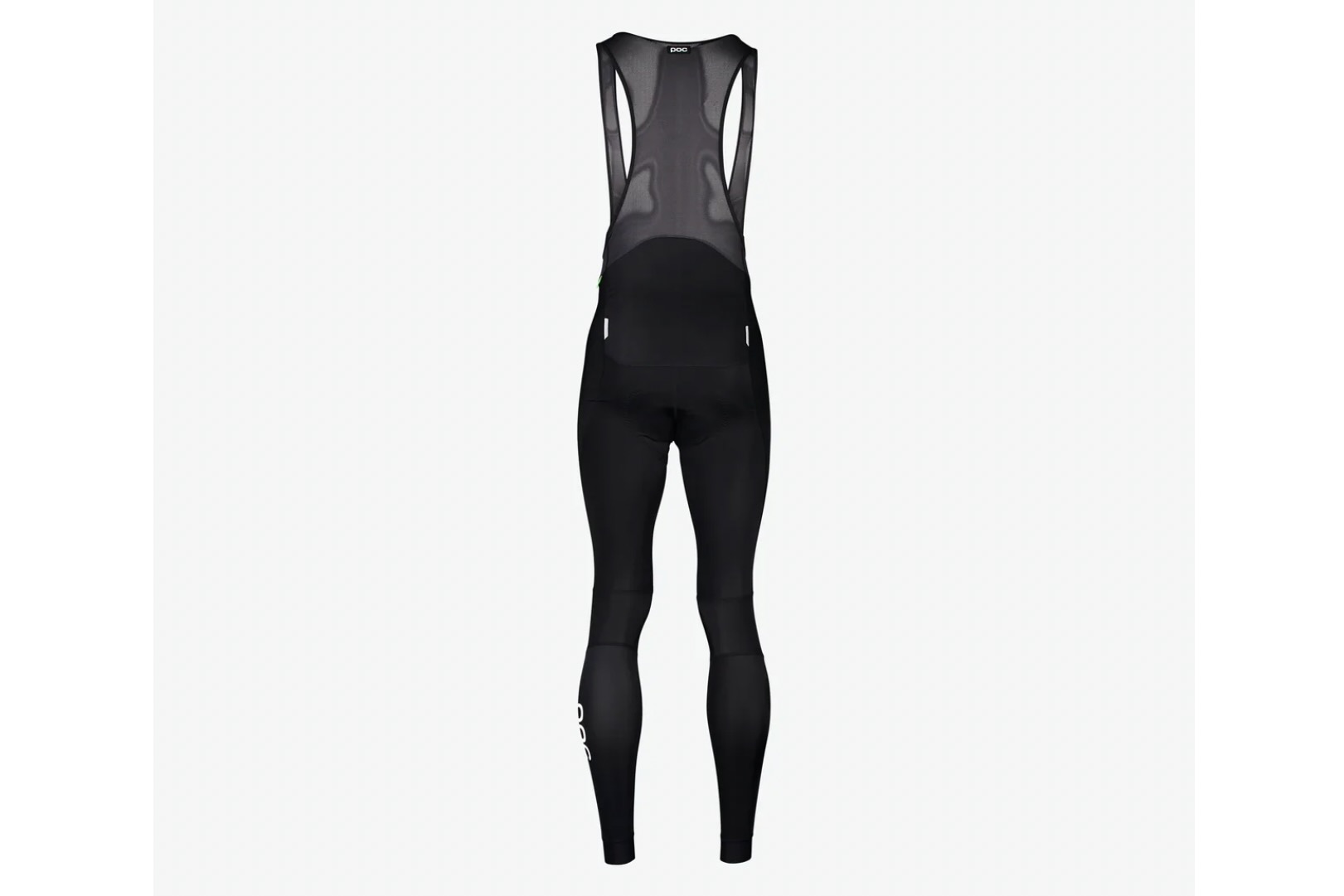
Pros
- Excellent pad
- Great Fit
- Warmth without excessive weight
Cons
- Heat-bonded logos could peel
Castelli Entrata Bibtight
Specs
- MSRP $130
- Weight 311g (size M)
- Claimed Temperature Range 43° to 57° F, 6° to 14° C
- Pad Castelli Kiss Air 2
- Materials 86% Polyamide, 14% Elastane
- Available Sizes XS, S, M, L, XL, XXL, XXXL

Pros
- Excellent value
- Great fit
Cons
- Heat-bonded logos will eventually crack or peel
- Not great for wet conditions
Assos Mille GT Winter Bib Tights C2
Specs
- MSRP $265
- Weight 299g (size M)
- Claimed Temperature Range not specified
- Pad Assos Elastic Interface
- Materials 76% Polyamide, 24% Elastane
- Available Sizes XS, S, M, L, XL, TIR
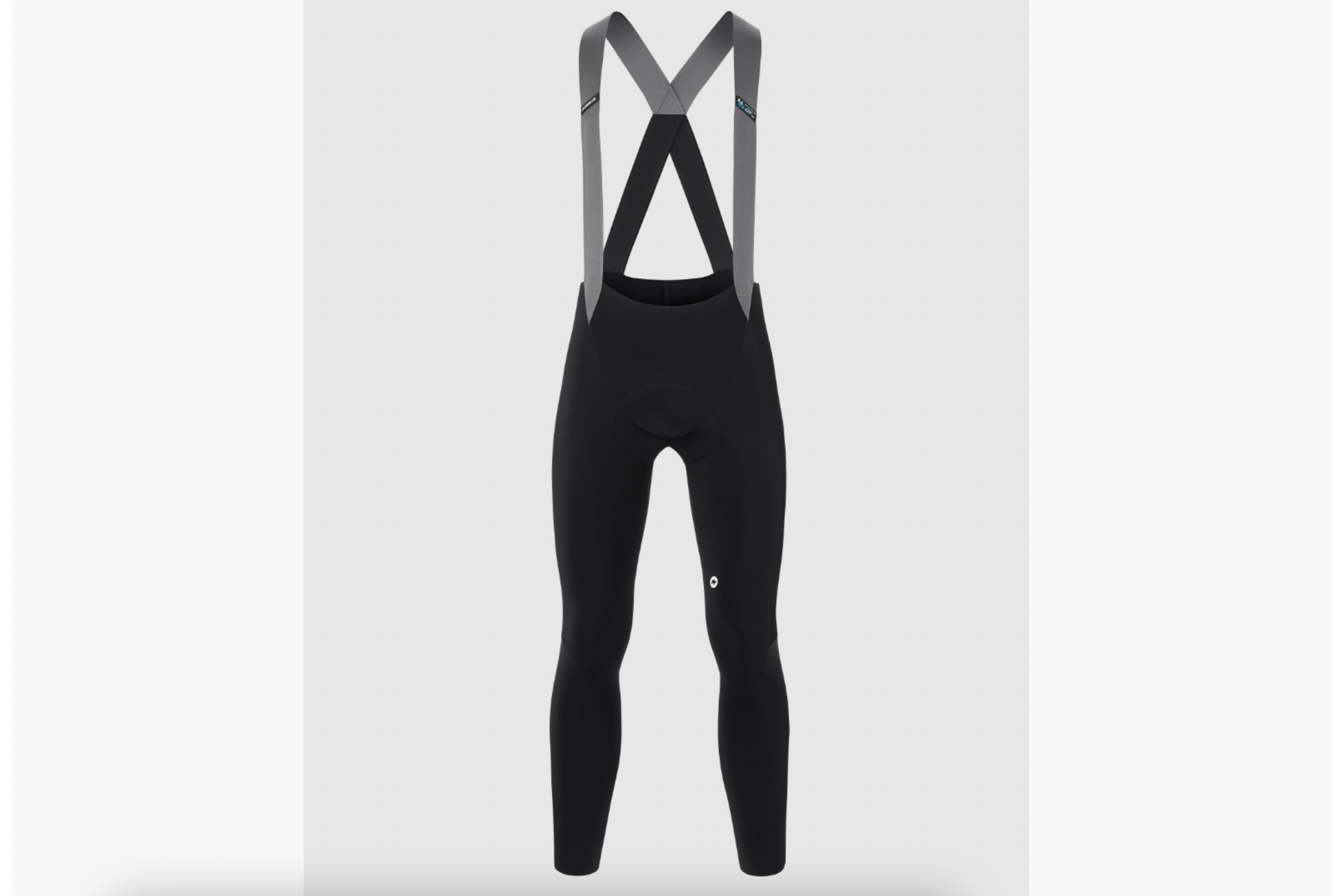
Pros
- Top-shelf pad
- Luxurious warmth
Cons
- No reflective elements
7Mesh MK3 Cargo Bib Tight
Specs
- MSRP $250
- Weight 309g (size M)
- Claimed Temperature Range not specified
- Pad Men's Performance Space Chamois
- Material 62% Nylon, 38% Elastane
- Available Sizes XS, S, M, L, XL, XXL
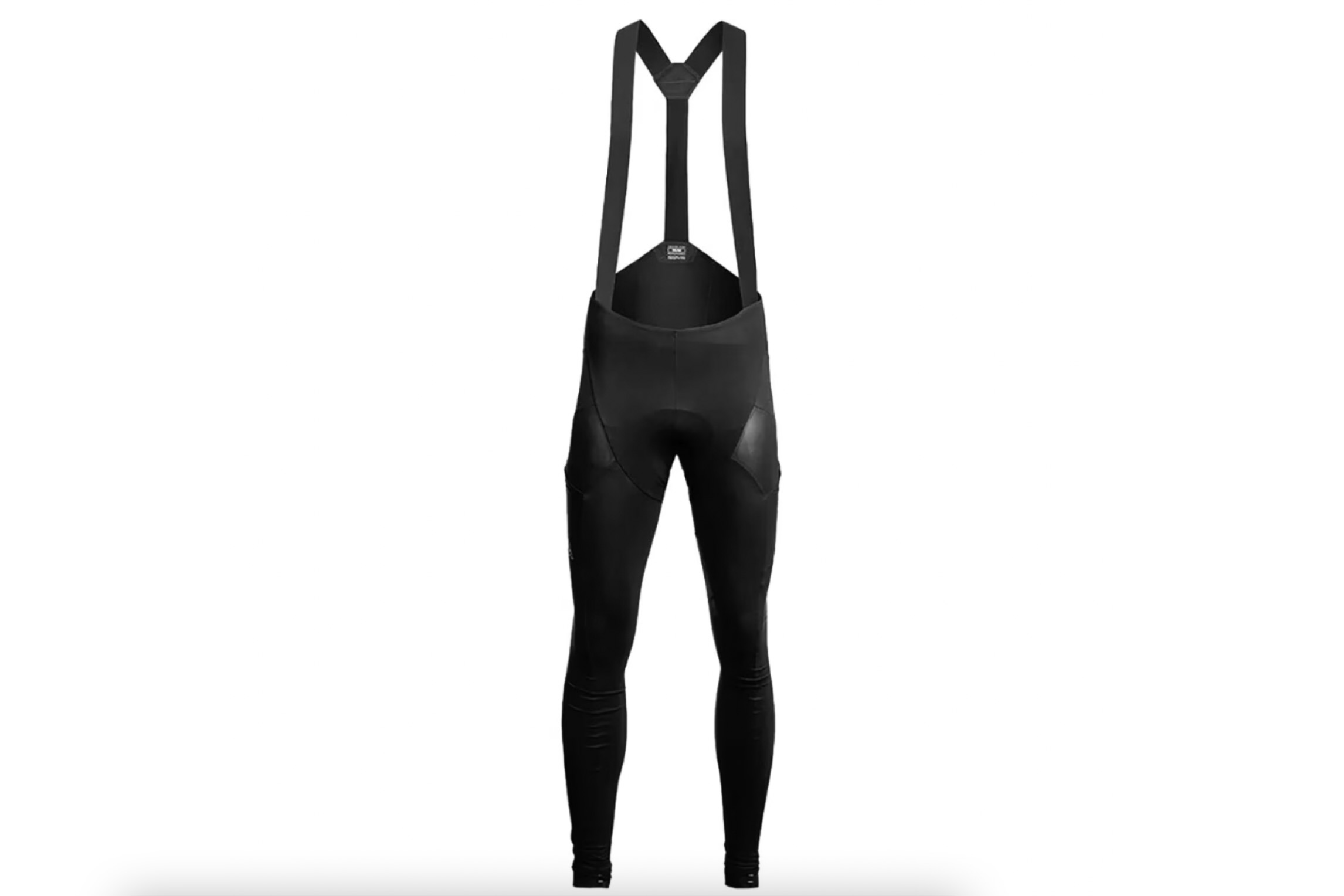
Pros
- Sublime comfort
- Ample storage
Cons
- Not suitable for severe cold or wet
Pearl Izumi Expedition Thermal Cycling Bib Tight
Specs
- MSRP $185
- Weight 289g (size M)
- Claimed Temperature Range not specified
- Pad Dual-density Levitate™ Plus
- Materials 56% Recycled Nylon, 30% Recycled Polyester, 14% Lycra® Elastane
- Available Sizes XS, S, M, L, XL, XXL
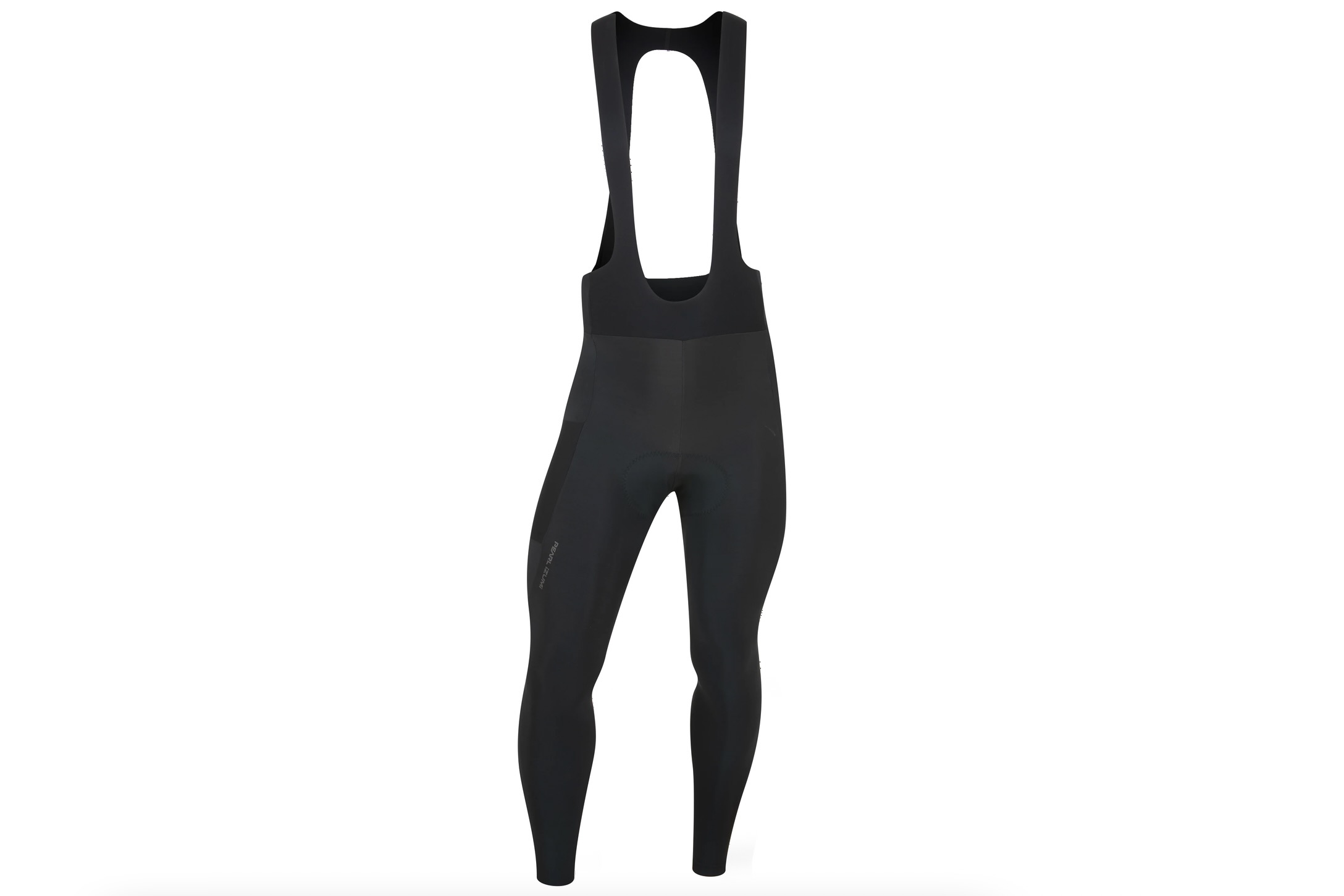
Pros
- Easy nature breaks
- Excellent seated comfort
Cons
- Side pockets could be bigger
- No rear pockets
Sportful Bodyfit Pro Bibtight
Specs
- MSRP $240
- Weight 333g (size M)
- Claimed Temperature Range "Cold"
- Pad Sportful Total Comfort Pro
- Materials Gore-Tex Infinium, Polyester, 10% Elastane
- Available Sizes XS, S, M, L, XL, XXL, XXXL
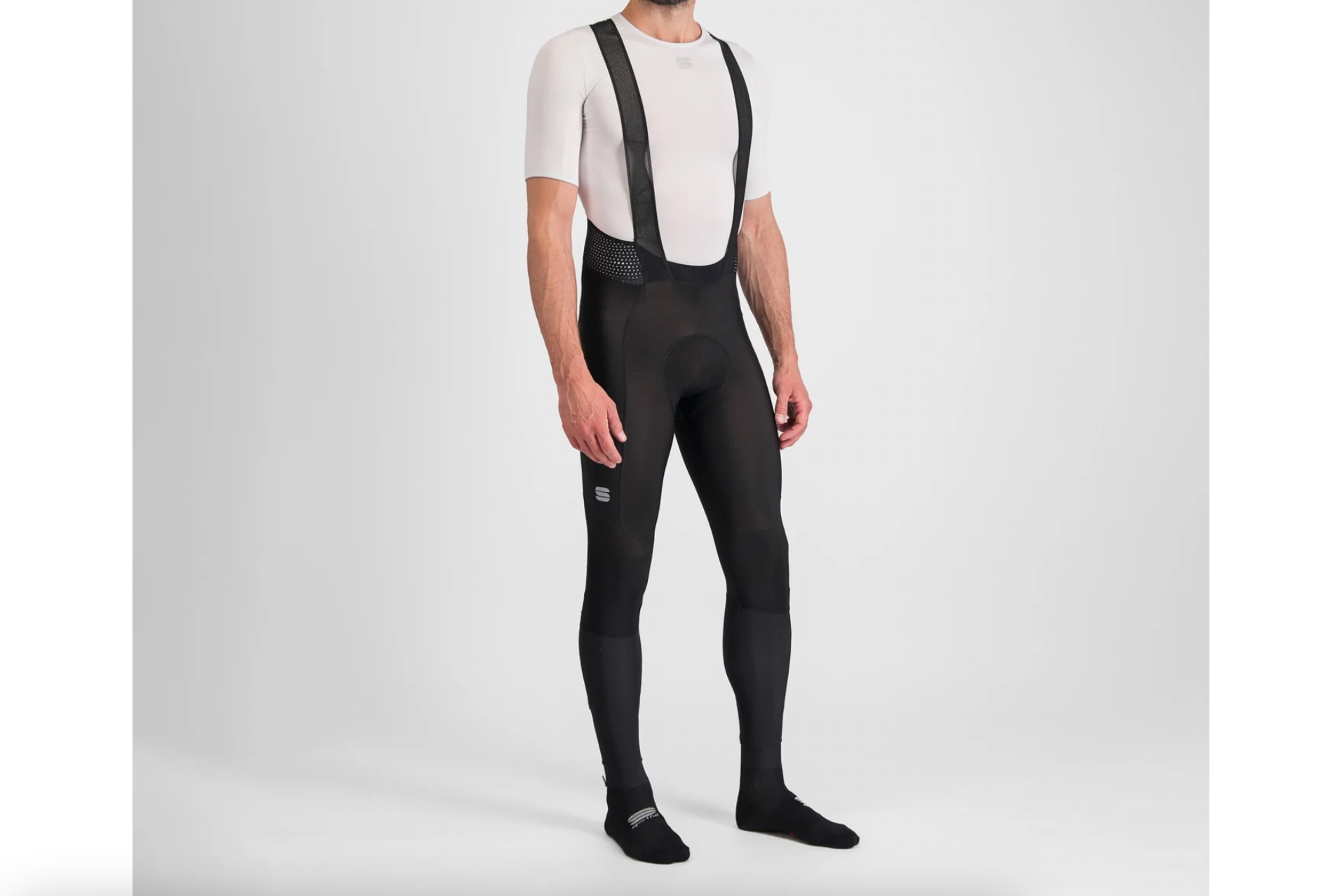
Pros
- Excellent pad
- Great Fit
- Super warm
Cons
- No reflective elements in the back
- Expensive
Castelli Sorpasso RoS Bibtight
Specs
- MSRP $240
- Weight 282g (size M)
- Claimed Temperature Range 28° to 50° F, -2° to 10° C
- Pad Castelli Progetto X2 Air Seamless
- Materials 86% Polyamide, 14% Elastane
- Available Sizes XS, S, M, L, XL, XXL

Pros
- Top-shelf pad insert
- Effective in a wide range of conditions
Cons
- Heat-transfer logos will peel
- Seams around hips might pucker for some
Cycling Bib Tights Comparison Chart
| Bib Tight Model | MSRP | Weight | Claimed Temp. Range | Pad | Materials | Available Sizes |
|---|---|---|---|---|---|---|
| MAAP Team Evo Thermal Bib Tight | $355 | 271g (size M) | 40° to 63° F | 3D Thermo-molded Multi-density | 85% Polyamide, 15% Elastane | 6, XS – XXL |
| Gorewear C3 Thermo Bib Tights+ | $130 | 281g (size M) | not specified | Active Comfort Men’s Seatpad | 85% Polyamide, 15% Elastane | 6, XS – XXL |
| Velocio LUXE Bib Tight | $299 | 230g (size M) | not specified | Signature Chamois developed w/ Cytech | 62% Polyamide, 38% Elastane | 8, XS – XXXXL |
| Rapha Pro Team Lightweight Tights With Pad | $250 | 220g (size M) | 43° to 64° F | Rapha Pro Team Training | 78% Recycled Nylon, 22% Recycled Elastane | 6, XS – XXL |
| Castelli Polare 3 Bibtight | $210 | 333g (size M) | 23° to 41° F | Castelli Kiss Air 2 | Gore-Tex Infinium, Polyamide, Elastane | 7, XS – XXXL |
| Ornot Thermal Cargo Bib Tight | $208 | 300g (size M) | 38° to 60° F | Endurance pad | 83% Recycled Polyamide, 17% Recycled Elastane | 6, XS – XXL |
| Castelli Free Aero RC Bibtight | $230 | 356g (size M) | 36° to 54° F | Castelli Progetto X2 Air Seamless | 53% Polyamide, 47% Elastane | 7, XS – XXXL |
| Endura FS260-Pro Thermo Bibtights II | $180 | 329g (size M) | not specified | Endura 600 Series Pad | 45% Nylon, 42% Polyester, 13% Elastane | 5, S – XXL |
| POC Thermal VPDS Bib Tights | $200 | 290g (size M) | 41° to 59° F | VPDS (visco-elastic polymer dough) | “Windproof and water-resistant material” | 6, XS – XXL |
| Castelli Entrata Bibtight | $130 | 311g (size M) | 43° to 57° F | Castelli Kiss Air 2 | 86% Polyamide, 14% Elastane | 7, XS – XXXL |
| Assos Mille GT Winter Bib Tights C2 | $265 | 299g (size M) | not specified | Assos Elastic Interface | RX Evo Plus: 76% Polyamide, 24% Elastane | 6, XS – XL, TIR |
| 7Mesh MK3 Cargo Bib Tight | $250 | 309g (size M) | not specified | Men’s Performance Space Chamois | 62% Nylon, 38% Elastane | 6, XS – XXL |
| Pearl Izumi Expedition Thermal Cycling Bib Tight | $185 | 289g (size M) | not specified | Dual-density Levitate™ Plus | 56% Nylon, 30% Polyester, 14% Lycra® | 5, S – XXL |
| Sportful Bodyfit Pro Bibtight | $240 | 333g (size M) | “Cold” | Sportful Total Comfort Pro | Gore-Tex Infinium, Polyamide, Elastane | 6, S – XXXL |
| Castelli Sorpasso RoS Bibtight | $240 | 282g (size M) | 28° to 50° F | Castelli Progetto X2 Air Seamless | 86% Polyamide, 14% Elastane | 7, XS – XXXL |
Why Should You Trust Bikerumor?
At Bikerumor, riding our bikes isn’t just a fair-weather activity. Sure, we ride our bikes all summer, but we also keep riding as the seasons change and temperatures drop. Turns out, most of us would rather keep riding outside for as long as possible before setting up the trainer for the darkest and coldest days of the year. Because of this, we know that having the right gear is critical to keeping the wheels spinning through the fall, winter, and spring. We’ve also had the opportunity to test the latest and greatest cool weather and winter riding apparel, including the best bib tights.
For our cycling bib tights review, we recruited frequent Bikerumor contributor, Bennett Shane, to test and compare 15 of the best models on the market. Bennett is an avid road cyclist who has been riding for over two decades. Based outside of Portland, OR, Bennett spends a large part of the year riding in cool to cold temperatures and on wet roads throughout the often soggy Pacific Northwest. This experience has taught him the importance of dressing appropriately for the conditions in order to maintain comfort while keeping up his fitness through the fall, winter, and spring, and he has become very fond of riding in bib tights when needed. Over the years, Bennett has also worked for several prominent brands in the cycling industry, and he has unique insight into the design and materials of apparel, accessories, and components. His experience both behind the scenes and as a road cyclist/consumer has helped him develop a keen ability to scrutinize the products he tests and tease out their often subtle performance differences. Bennett has also contributed his expertise and knowledge of road cycling to a number of our other buyer’s guides including the best cycling bib shorts, protective road bike helmets, and our favorite road bike shoes.
After researching the best cycling bib tight on the market in 2023, we rounded up 15 models for testing and comparison. Over the course of several months, each pair of bib tights was put through its paces during crisp morning, evening, and all-day rides. As the days got shorter, leaves began to fall, and moist autumn weather gripped the Pacific Northwest, Bennett had the perfect conditions for testing bib tights on the picturesque mountain and country roads not far from his home. While riding, important factors like fit, comfort, warmth, pad comfort, straps, and weather/wind protection were assessed to see how each model performs in the real world. Additionally, each model’s construction, materials, seams, and features like pockets, ankle zips, and reflective elements were taken into consideration. When testing wrapped up, we zeroed in on our favorites and those that excel for specific reasons compared to the rest.
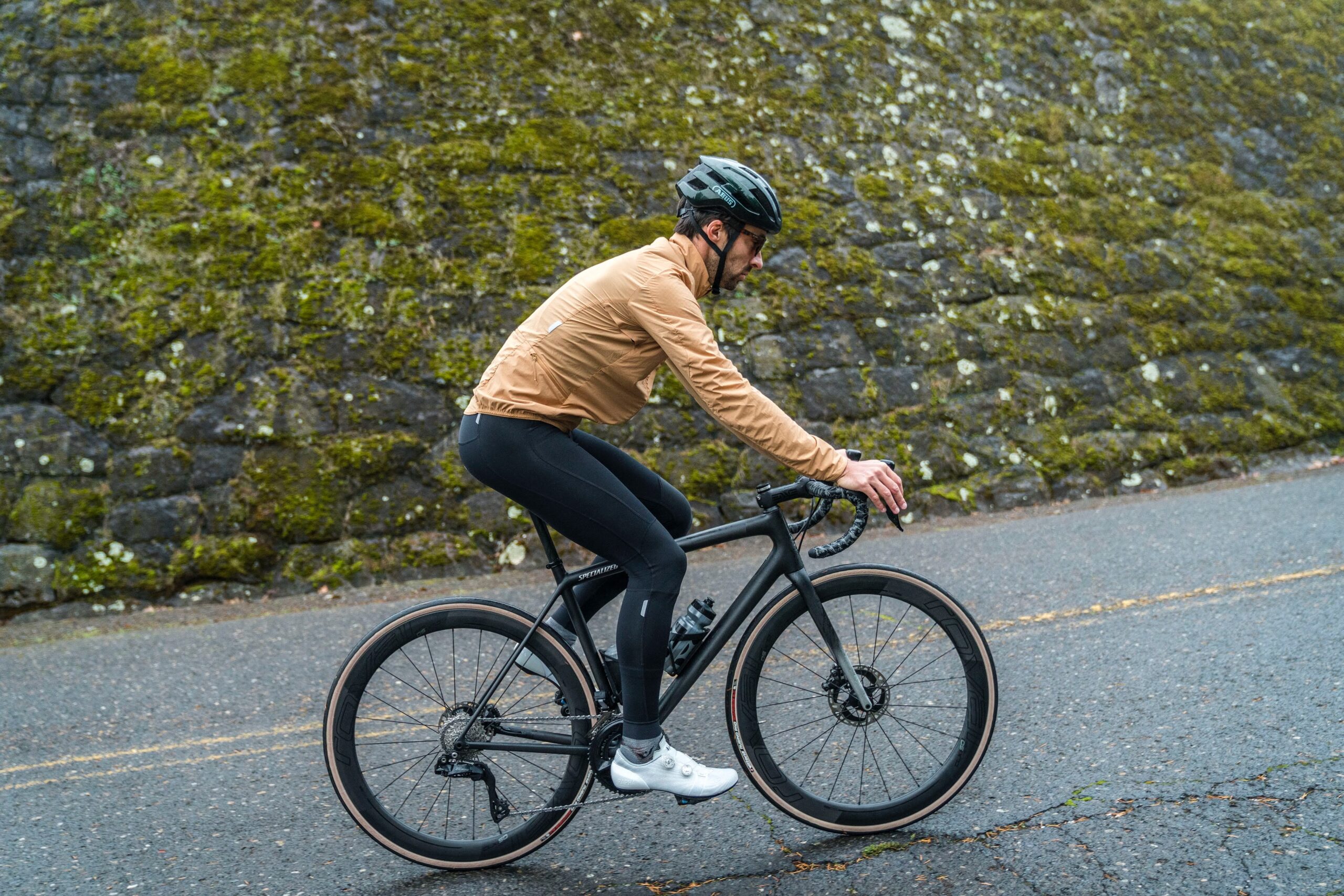
Buying Advice: How to Choose Cycling Bib Tights
As the name suggests, bib tights are essentially a long version of bib shorts. They are full-length, form-fitting tights with bib straps. As with any piece of cycling apparel, there are several considerations when choosing bib tights. Not only are there many brands to choose from, but they come in a wide range of materials, designs, intended uses, and price points to choose from. It is important to consider the temperatures and weather conditions you’re most likely to encounter while riding and match your choice accordingly. As always, getting bib tights that fit properly is key to long-term comfort.
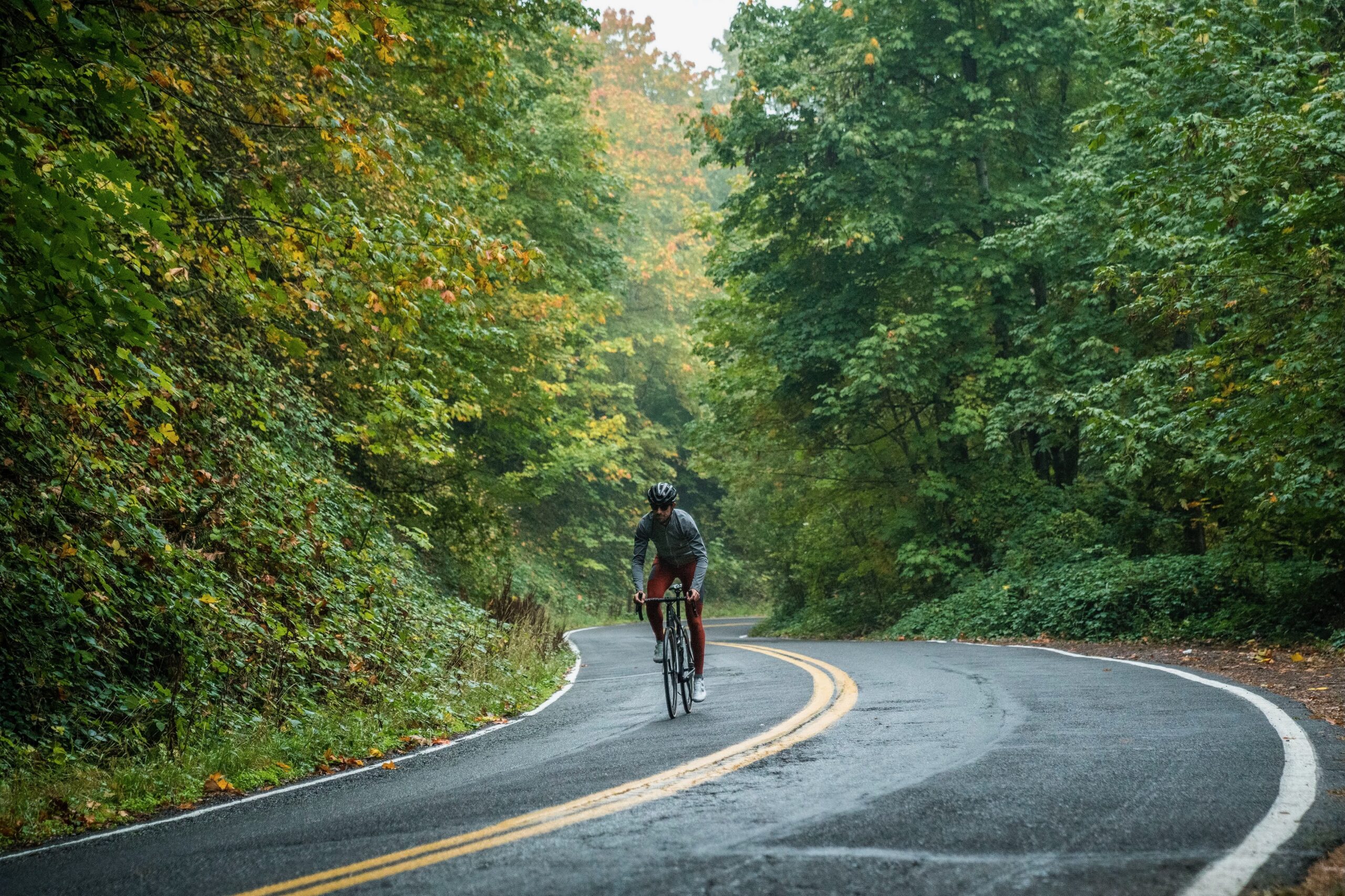
Temperatures and Weather Conditions
The right pair of cycling bib tights should be well-suited to handle the temperatures and weather conditions that you’ll be encountering on the bike. It stands to reason that riders who will only be going in cool, mild conditions don’t need as much insulation as those trying to ride in very cold temperatures at or near freezing. Likewise, those riding in wet or rainy conditions have different weather protection needs than those who only ride when it’s dry. Thankfully, manufacturers make bib tights to cover the spectrum of temperatures and weather conditions. Castelli is a great example, as they offer nine different bib tight options as well as three bib kickers and two regular, non-bib tights. So, when choosing bib tights, consider your need for warmth as well as water and wind protection.

Warmth
The temperatures you’re going to encounter while riding will be a determining factor in what level of insulation you want or need in your cycling bib tights. Fortunately, bib tights come in a variety of materials to suit varying temperatures, your personal warmth needs, and riding intensity levels. If you’re among the hardcore group of cyclists who ride in temperatures at, or sometimes even below freezing, then you’ll probably benefit from a pair of thermal bib tights that employ an insulating material in their construction. These insulating materials vary, but often they are thicker and fleece-backed to create a barrier from the cold and maintain warmth. While riding outdoors in sub-freezing temperatures is some people’s cup of tea, most of us are more likely to be riding in the fall, winter, and spring when temperatures are a bit milder in the 40° to 60° F range. Cool temperatures like these typically don’t require as much insulation, so some of the models with thinner fabrics may be more appropriate. The good thing is there are plenty of options, so you should be able to find a pair that suits your needs.
Often, but not always, brands list a suggested temperature range for their bib tights and other apparel, so it makes it easier to zero in on the model you need. The Castelli Polare 3 Bibtight is the warmest option we tested, built with an insulating fleece-lined thermal fabric and Gore-Tex Infinium protecting the front of the legs. With a suggested temperature range of 23° to 41° F, these tights are stellar for cold and nasty conditions, but they are overkill for milder temps. On the opposite end of the spectrum, the Rapha Pro Team Lightweight Bib Tight is much thinner and suggested for temperatures between 43° and 64° F and better suited to mild conditions and/or high-intensity riding, but won’t provide the warmth needed for properly frigid temperatures. We find the highest degree of versatility to be offered by models that fall in the middle of the temperature range, as they work well for the conditions that most riders are going to encounter.
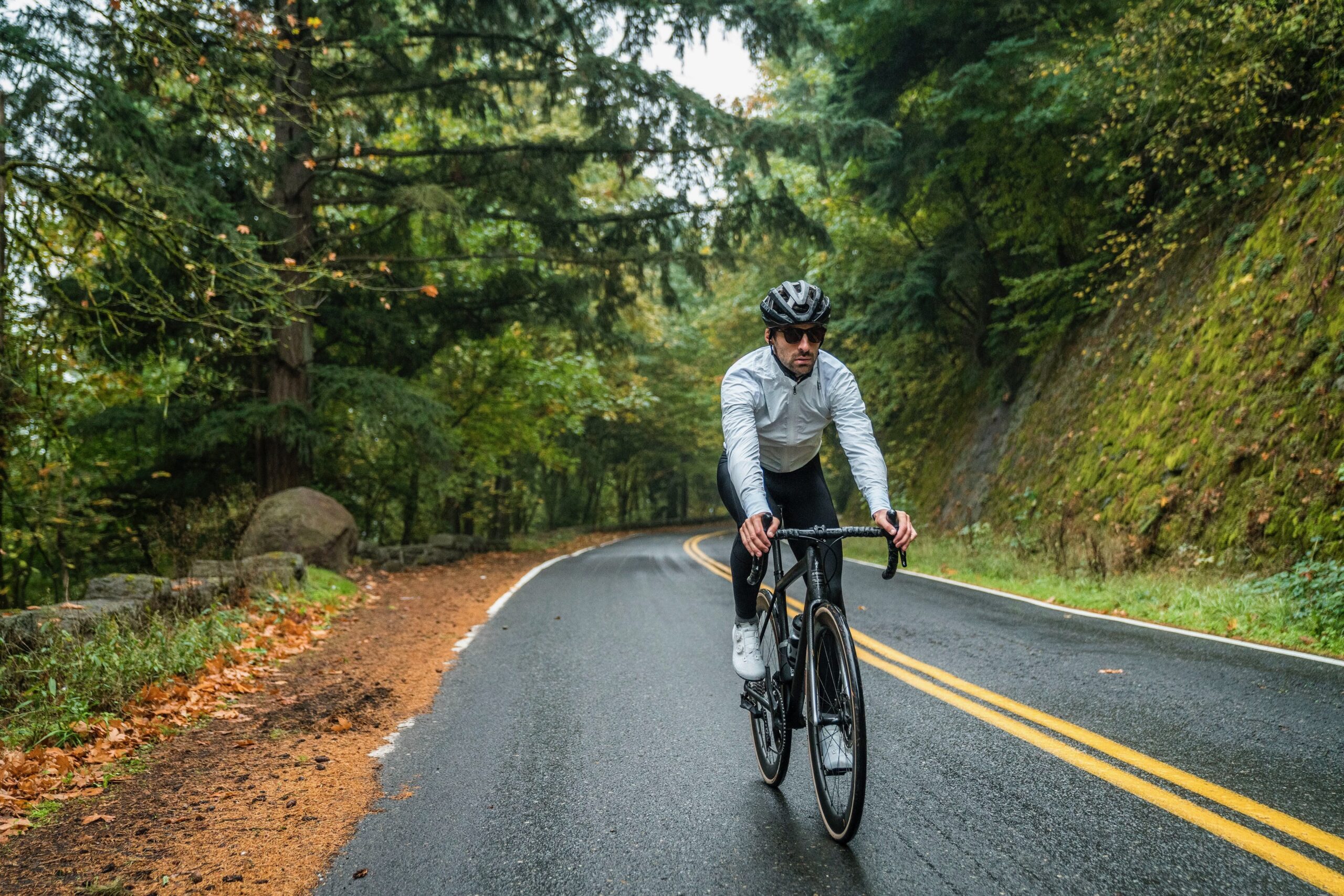
Weather
Weather is also very important to consider, as some models provide more protection from rain and/or road spray with water-resistant or water-repellant materials. Often, these materials are placed strategically on the tights, typically on the front and/or the back where falling rain or road spray is most likely to hit you while some also include it on the lower legs to protect from front tire spray. There is a wide range of fully waterproof fabrics and membranes on the market, though their application in bib tights is tricky given the stretch needed for them to fit right and perform well. If you are purposefully riding in heavy rain, you’ll do best to invest in some dedicated rain pants.
That said, riding in a heavy downpour anytime, but especially in cool to cold weather is pretty miserable regardless, and most of us try to avoid it. It’s more likely that you’ll experience a drizzle, light rain shower, or spray from wet roads, so many models of bib tights have fabrics that are treated with a Durable Water Repellant (DWR) finish to fend off minor amounts of moisture. These finishes work relatively well to bead up and shed light amounts of water, but they do break down over time and repeated washings, though they can be replenished with certain treatments.

Wind
When the temperatures drop, one of the main things that makes you cold is the wind. Whether from the wind blowing or your own speed riding on the road, the windchill almost always makes it feel colder than it actually is. To combat the chilling effect of the wind, many bib tights feature wind-blocking materials in their constructions to help keep it at bay. Most of the time, these wind-blocking fabrics and membranes are strategically placed in panels on the front of the tights with more breathable panels on the back to allow self-generated heat and moisture to escape.
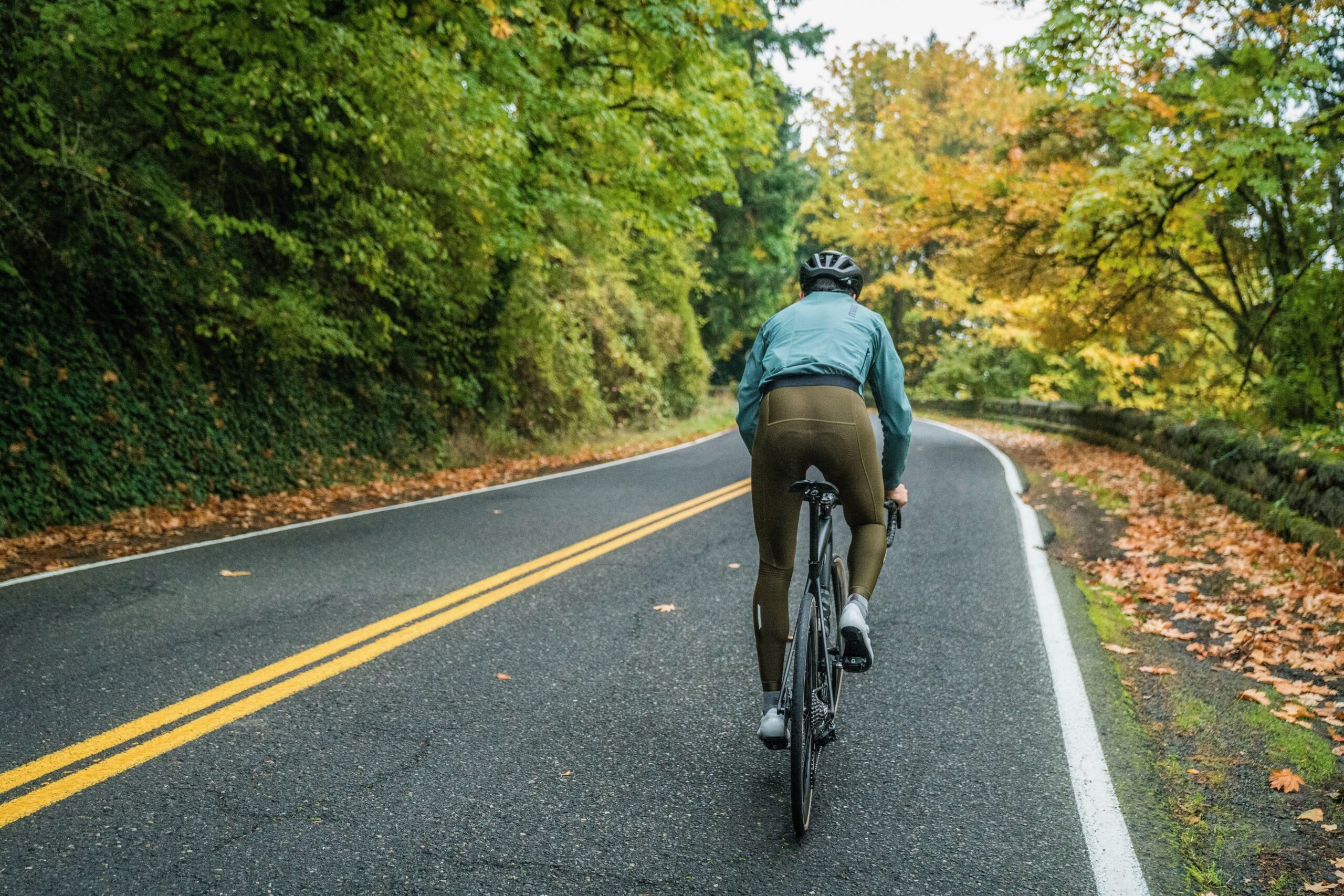
Fit and Comfort
Beyond getting bib tights that are geared toward the temperatures and weather conditions you’ll be riding in, getting a pair that fits well is one of the most important things you can do to be comfortable on the bike. There are a number of factors that go into this, of course, including getting the right size for your body, the pad or chamois, and the bib straps.
Sizing
It sounds obvious, but getting the right size is incredibly important for your bib tights to fit right and be comfortable. Ideally, you want them to be snug throughout without any bagginess or excessive pressure. Well-fitting tights should feel like a second skin that moves freely with your body while providing support and stability for the pad. Tights that are too small may put unpleasant pressure on your abdomen or the straps may be tight and uncomfortable over the shoulders. Tights that are too large may allow the pad to move around because the shoulder straps are too long or they are simply loose fitting. A loose or baggy fit is not ideal as it may negate the thermal properties of the fabrics or cause irritation with the tights moving independently of your body. Thankfully, most brands have detailed size charts on their websites so you hopefully figure out which size is best based on your waist size, inseam length, etc. Often, it is as easy as getting the same size as the bib shorts you wear in the summer months, especially if you are buying the same brand. If you’re unsure, trying a pair on is generally a surefire way to ensure you get the best fit.
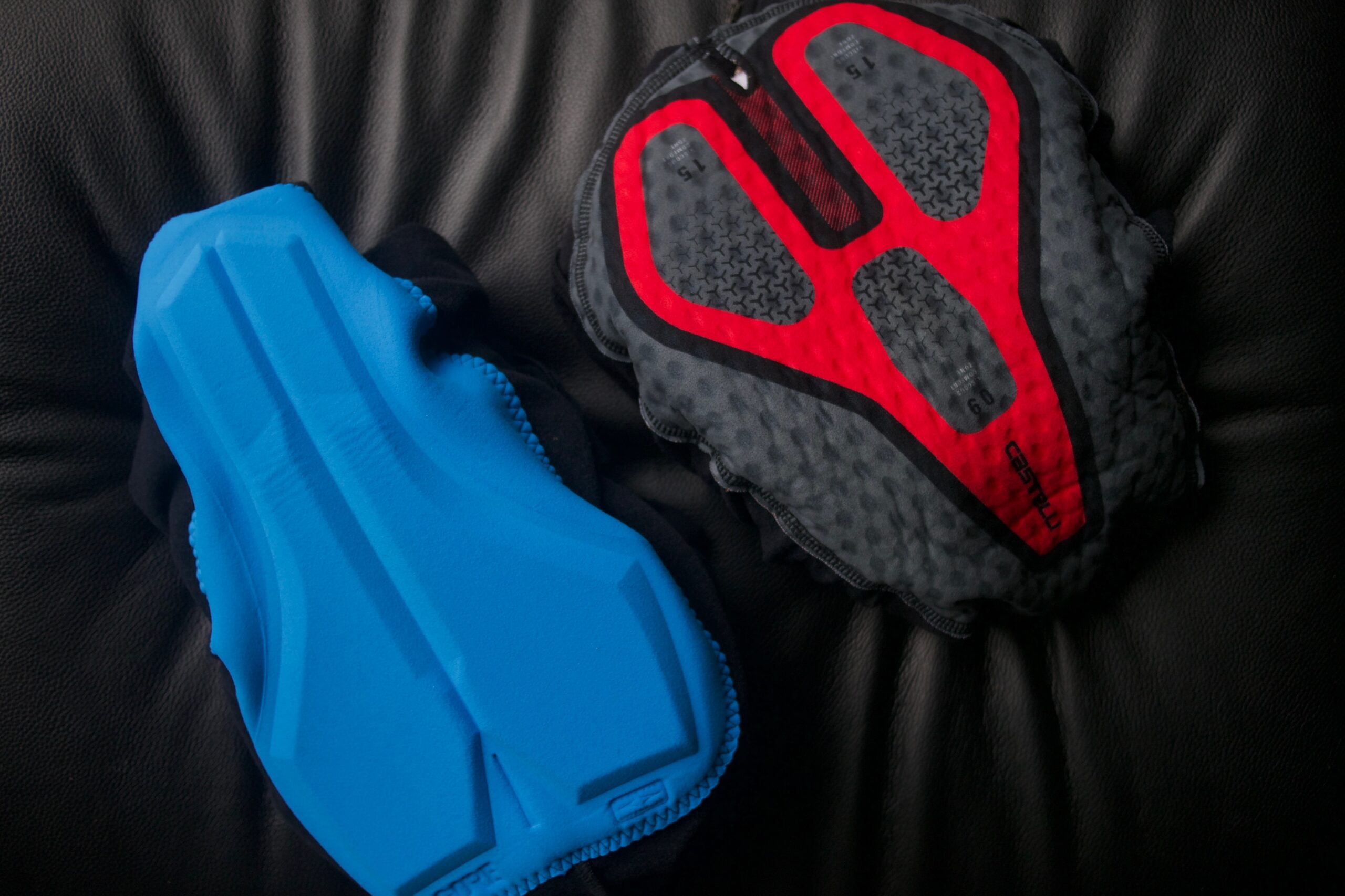
The Pad or Chamois
The seat pad, or chamois, is a critical element of a pair of bib tights that is largely responsible for our seated comfort while pedaling. These pads vary in their construction, materials, and padding levels, but they all intend to provide a slight cushion between your body and the saddle. One of the main goals is for this pad to remain stable under your body and resist shifting so that it stays in place to do its job most effectively. Bib tights, and bib shorts, aim to keep the pad stable through the use of bib straps that maintain light tension on the lower portion of the tights and hold it in place. Thankfully, most brands make great pads these days and many of them employ the exact same pads used in their comparable bib shorts. If you already know of a pad that works well for you, you can probably find the same one in a pair of bib tights as well. Along with finding tights with a comfortable pad, the right road bike saddle can also be instrumental in enhancing your seated comfort on the bike.
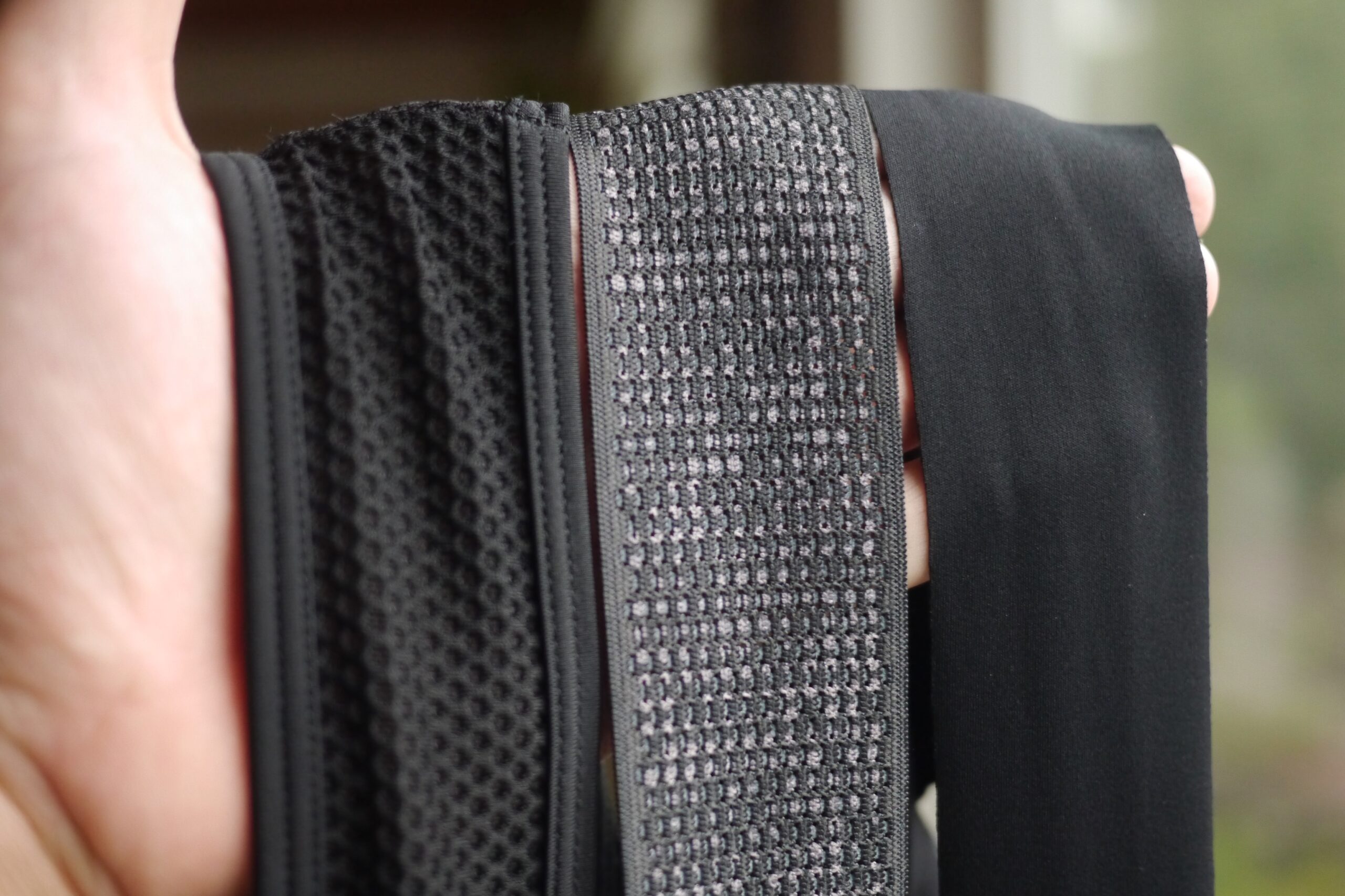
Bib Straps
The straps are what separate bib tights from regular tights and they are a key element when it comes to fit and comfort. The straps should provide light tension over the shoulders to support the lower portion of the tights, holding them in place and keeping the pad positioned properly beneath you. The fact that tension is held over the shoulders also means that, unlike non-bib tights, they don’t require tension around the waist to keep them up and are generally more comfortable as a result. Ideally, the straps will have just light tension over the shoulders when seated and standing on the bike. Too tight, and they can dig into your shoulders or pull up too much on the lower portion of the tights causing discomfort. Too loose, and your tights may have a tendency to slide down, the pad can shift beneath you, or the straps may migrate or even slip off your shoulders.
Bib straps come in a range of different styles and materials but they all strive to accomplish the same goal of keeping your bib tights in place. Some are made of mesh, some are made from the same material as the tights, some have trim sewn on the edges, and others have raw-cut edges. Regardless of their material and construction, they should feel comfortable when worn over a base layer or against the skin for extended periods.

Ankles
Full-length bib tights vary somewhat in the design of their ankle cuffs. Some simply stretch to get over the heel and ankle, while others have short zippers on either the side or the back that make sliding them over the foot easier. Typically, the stretch available in the chosen fabric is the deciding factor in which style is used. Thicker, more insulated materials or those with water or wind-resistant membranes often don’t have as much stretch, so a zipper can make them easier to put on and take off. Thinner materials or those with more elastane or spandex in their composition often stretch more easily and can be slipped over the foot with little fuss or need for a zipper.
While they can certainly make your bib tights easier to put on and take off, zippered ankles can be problematic. The zippers themselves can break or get stuck rendering them useless. Additionally, they can be uncomfortable if pressed against the leg if you pull socks or shoe covers over the top of them.
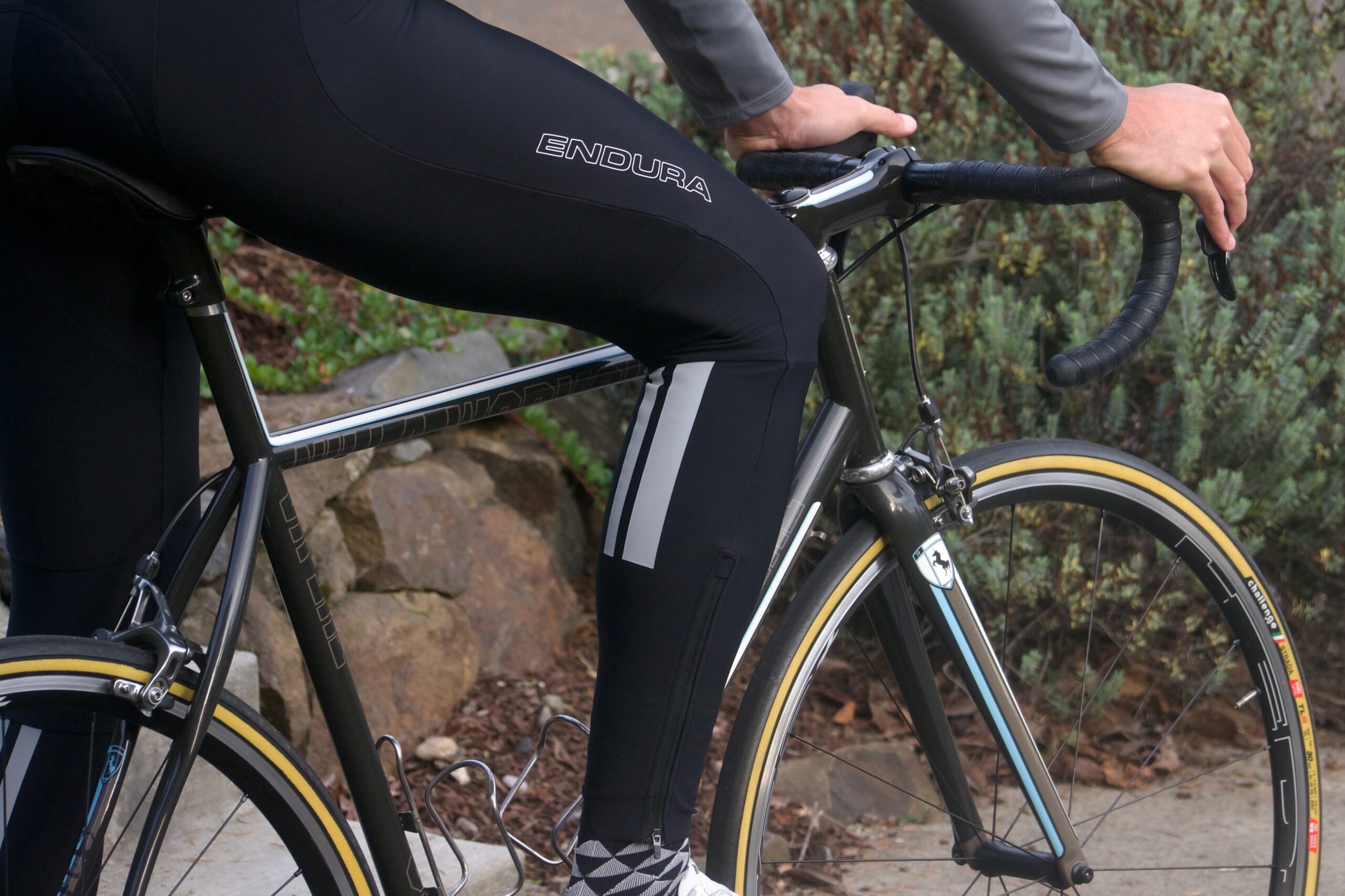
Visibility
Riding in the spring and fall but especially in the winter, can mean riding in less-than-ideal light conditions, so reflective elements that enhance your visibility are a nice addition to a pair of bib tights that many brands include. Of course, a good set of lights is also recommended, especially if you’re flirting with low light at dawn and dusk, but some attention-grabbing reflective highlights can help you be seen by drivers. The features vary in their size and placement, but some are always better than none at all.
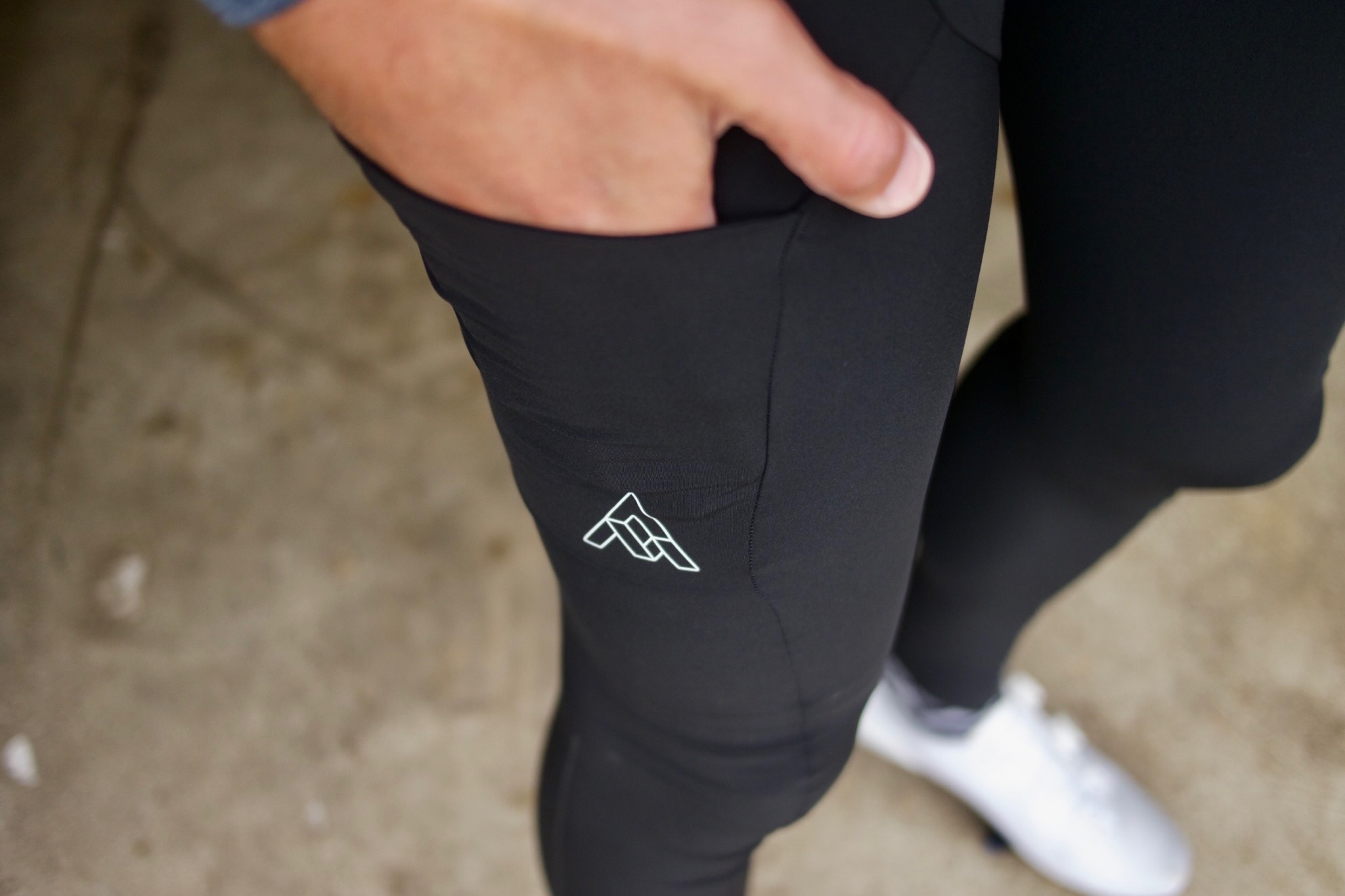
Pockets
Some bib tights, typically those with the word “cargo” in the name, are equipped with pockets on either the thighs, back, or both. While not everyone needs or wants pockets on their tights, they can be very useful for those who like to keep certain items easily accessible while riding. Keeping snacks or your phone in a thigh pocket can make them much easier to reach while riding or when stopped than fishing around in a jersey pocket under a jacket or in a bike-mounted bag. We tested several bib tights with pockets, including the 7Mesh MK3 Cargo, Ornot Thermal Cargo, and the Pearl Izumi Expedition Thermal.
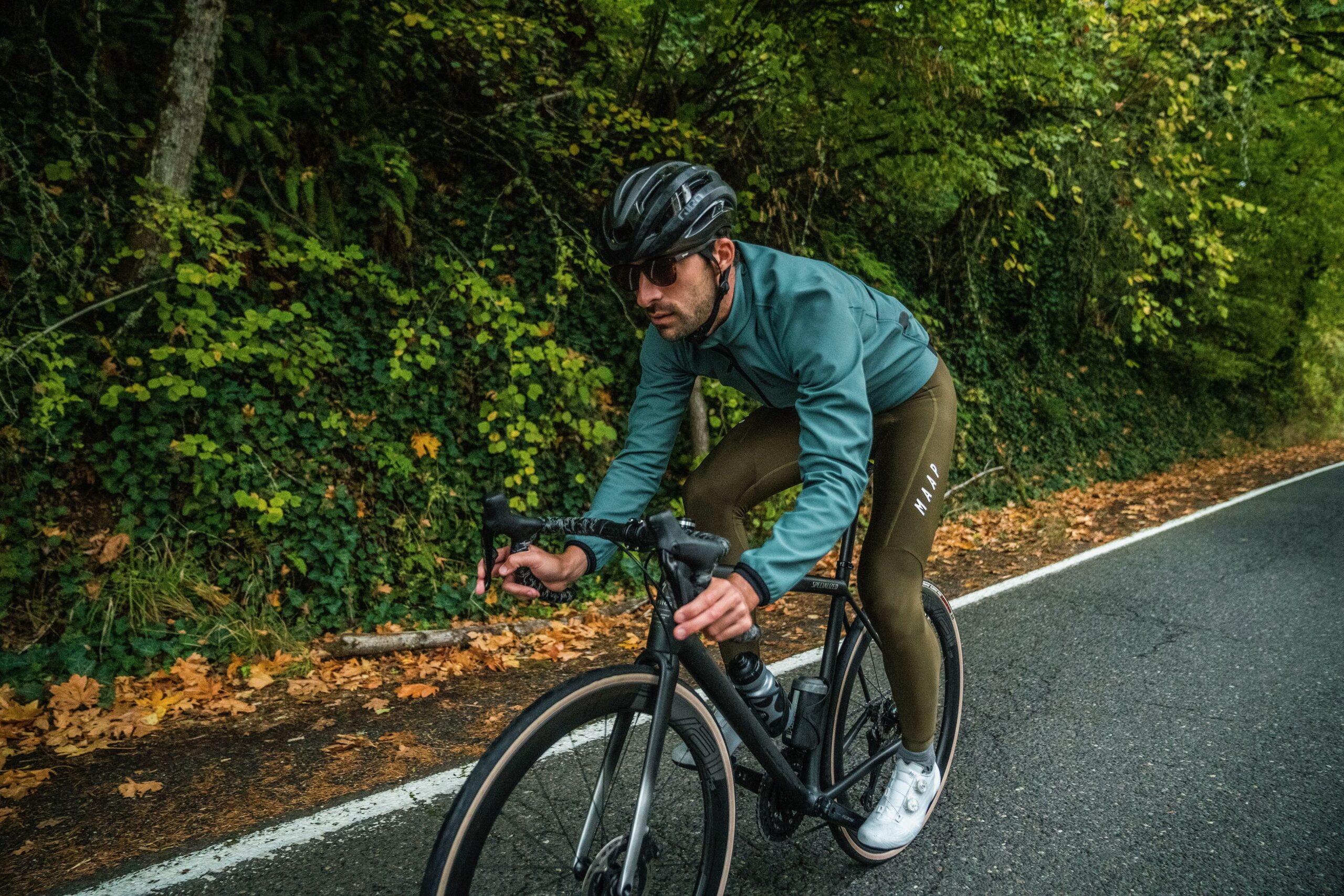
Value
Like anything else in cycling, the price of bib tights varies from wildly expensive to relatively affordable. Different materials, chamois pads, construction methods, and even brand names can play a role in the price. As with many things, you often get what you pay for, and our top-rated model, the MAAP Team Evo Thermal, also happens to be the most expensive. That said, you don’t have to shell out the big bucks to ride comfortably in cool conditions. In fact, the two least expensive models we tested, the Gorewear C3 Thermo Bib Tights+ and the Castelli Entrata Bibtight, both retail for $130 and have plenty to offer the rider on a budget or anyone who appreciates a good value. And, there are plenty of models that fall in the middle of that price range that fit well and provide excellent temperature regulation and protection from the elements.

Frequently Asked Questions About Cycling Bib Tights
If you’re a dedicated cyclist, maintaining your riding program through the fall, winter, and spring typically means braving cool-to-cold temperatures and potentially some inclement weather conditions. In order to maintain comfort and enjoyment during these conditions, it’s important to dress appropriately. There are a few options when it comes to gearing up your lower body for winter riding, but bib tights are arguably the best. They come in a wide range of materials with varying levels of insulation and weather/wind protection to keep you spinning happily through the winter months.
Wearing bib shorts with leg warmers is absolutely another good option and is especially great for changing seasons and days when you want to start warm but know you’ll overheat later. But in the winter, we like riding in full tights because they ensure full coverage, they won’t slide down, and frankly, they just look a little tidier. Bib tights tend to be a little more comfortable without grippers touching your thighs or being squeezed under your shorts. They also make getting dressed easier: one piece versus three!
It depends on your preference. In general, we always recommend bibs over non-bib tights for waist comfort, since they don’t have a tight waistband that can press into your abdomen as you bend over the bike. Not surprisingly, most bib tights make peeing a difficult task, especially in cold weather; unless there’s a zip or flap at the back, you may need to disrobe entirely to pee. Bib tights also are a bit more cycling-specific and typically come with a chamois built-in, making them less useful for other activities.
We always recommend riding with a pad/chamois for comfort purposes. More often than not, cycling-specific tights come with one. Some brands make tights and bib tights without a pad/insert/chamois, that is designed to be worn over a pair of padded shorts or bib shorts. Wearing tights over a pair of padded shorts has the advantage of two layers which may be a benefit in colder temperatures, but can also lead to bunching with multiple layers of fabric involved. Tights and bib tights without a pad are also typically less expensive than those that come with one, and without the pad, they are more functional for other activities off the bike.
Wearing underwear is not recommended because bib shorts and tights with a chamois/pad/insert are designed to be worn against the skin. One of the primary concerns with introducing another layer of fabric is that it can cause issues as the material can bunch and cause chafing, irritation, or pressure points on a very sensitive part of your anatomy. Another issue is that underwear can trap and hold moisture that your pad might otherwise wick away, which can be unsanitary and potentially exacerbate the aforementioned irritation issues.
The post The Best Cycling Bib Tights of 2023 appeared first on Bikerumor.
from Bikerumor https://ift.tt/aykU6Cd
via IFTTT

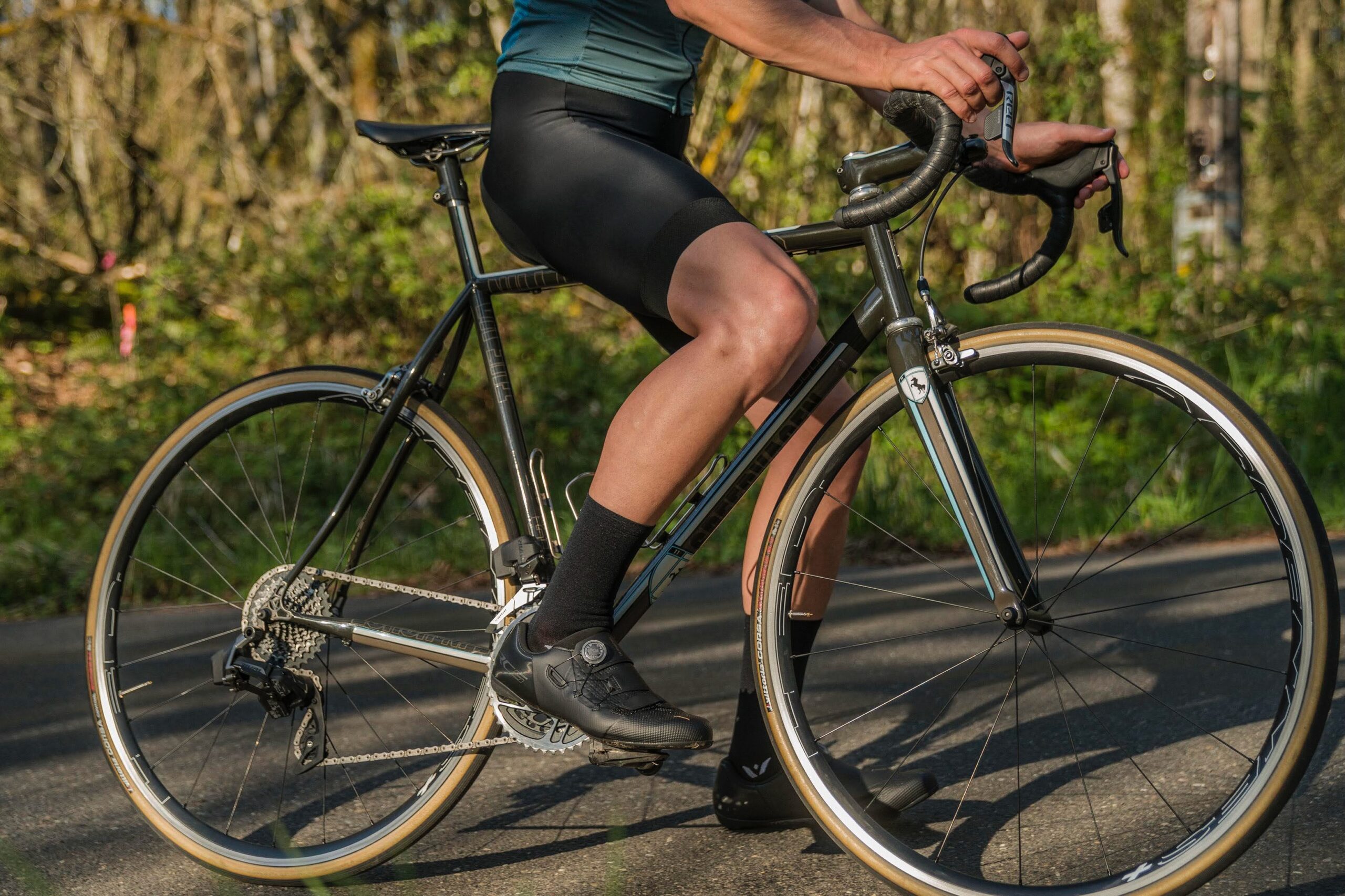
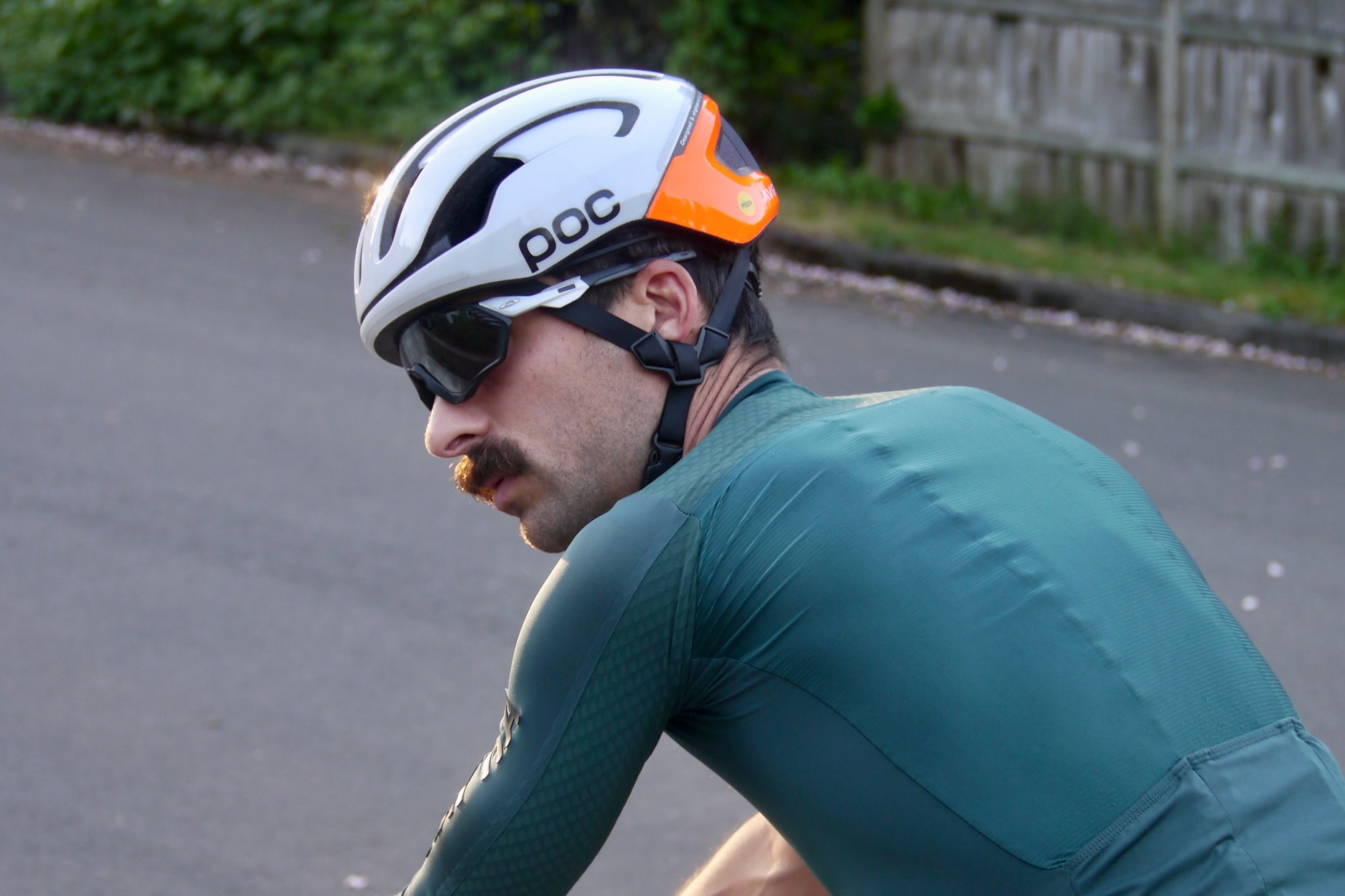


0 Comments